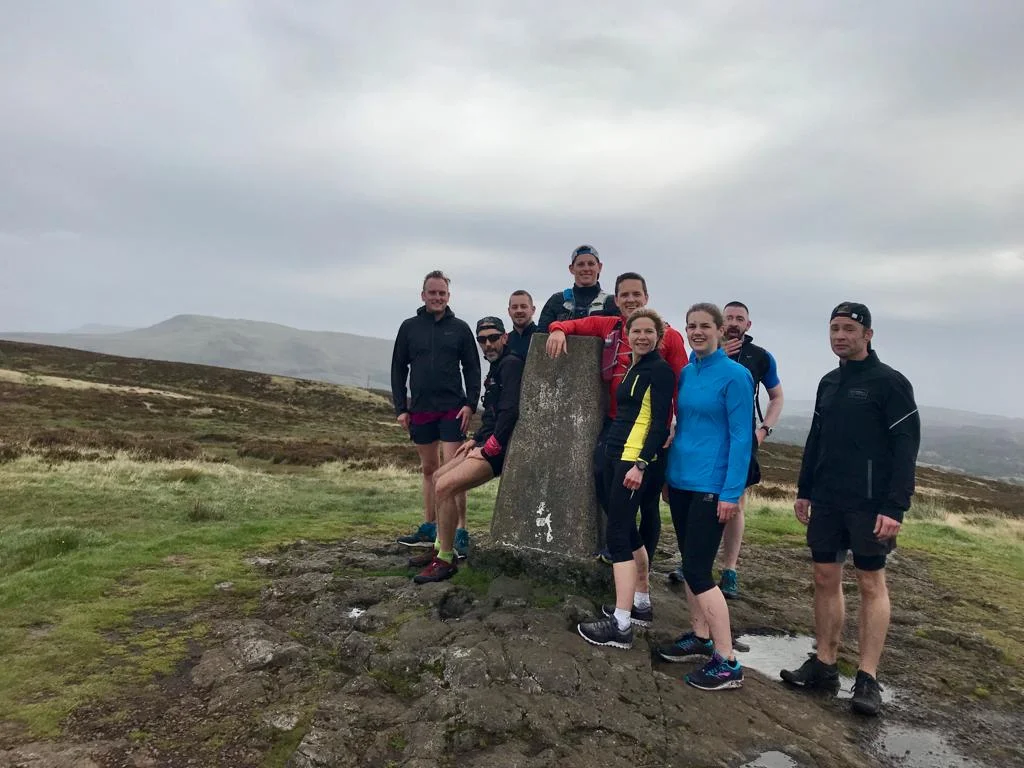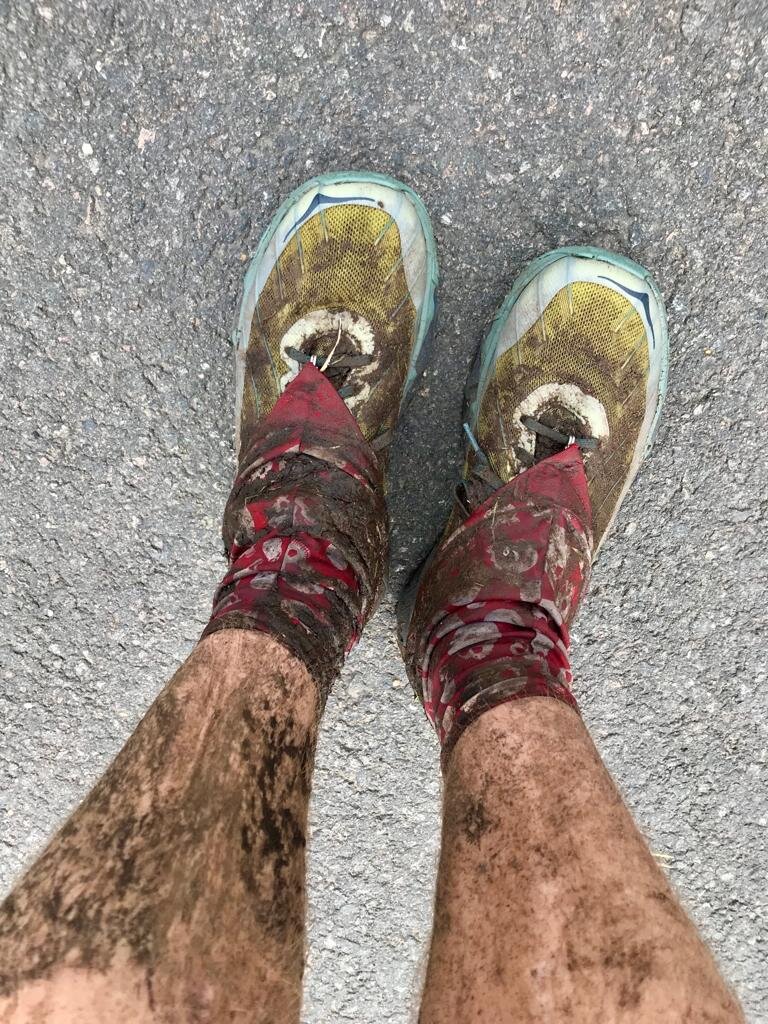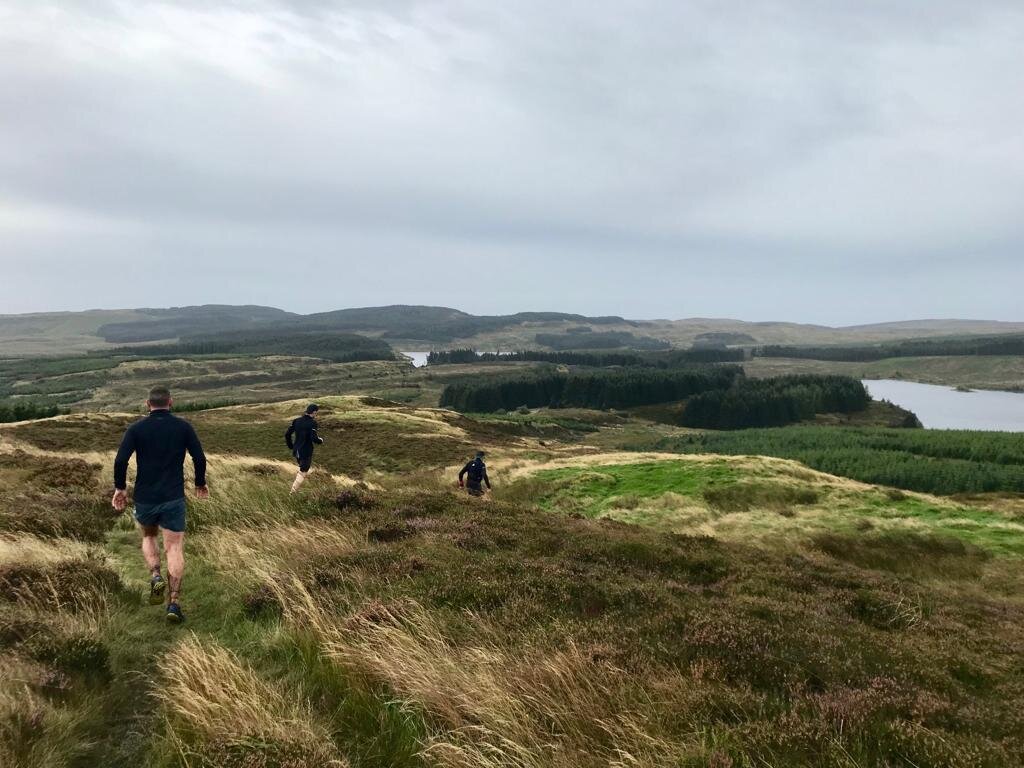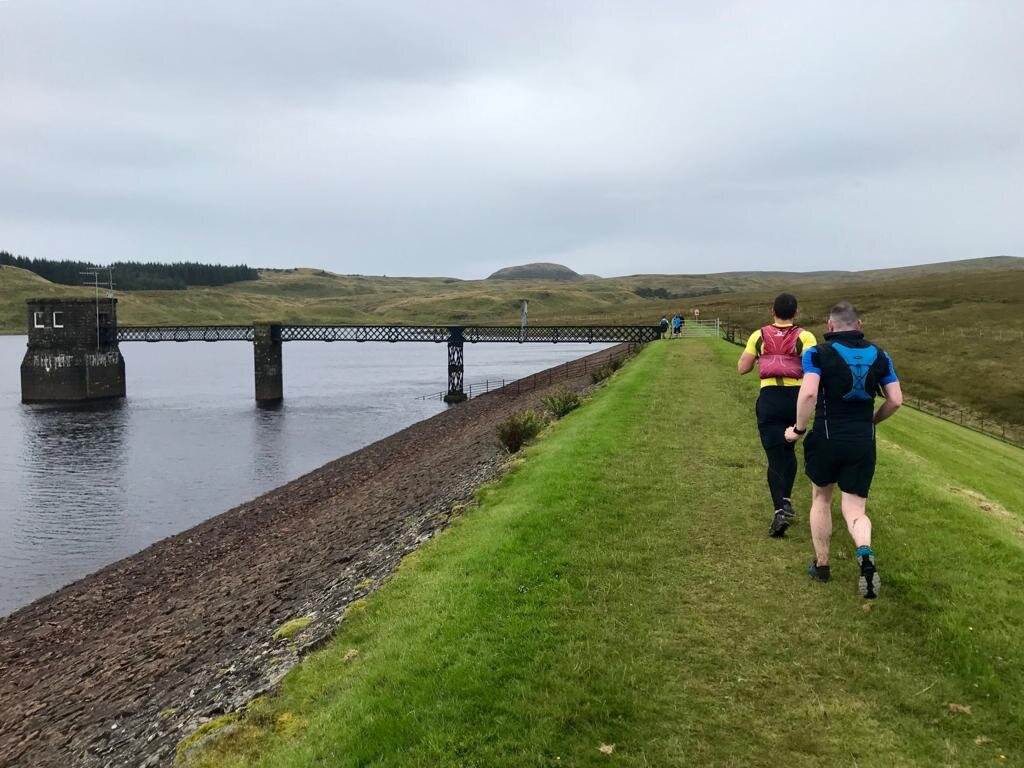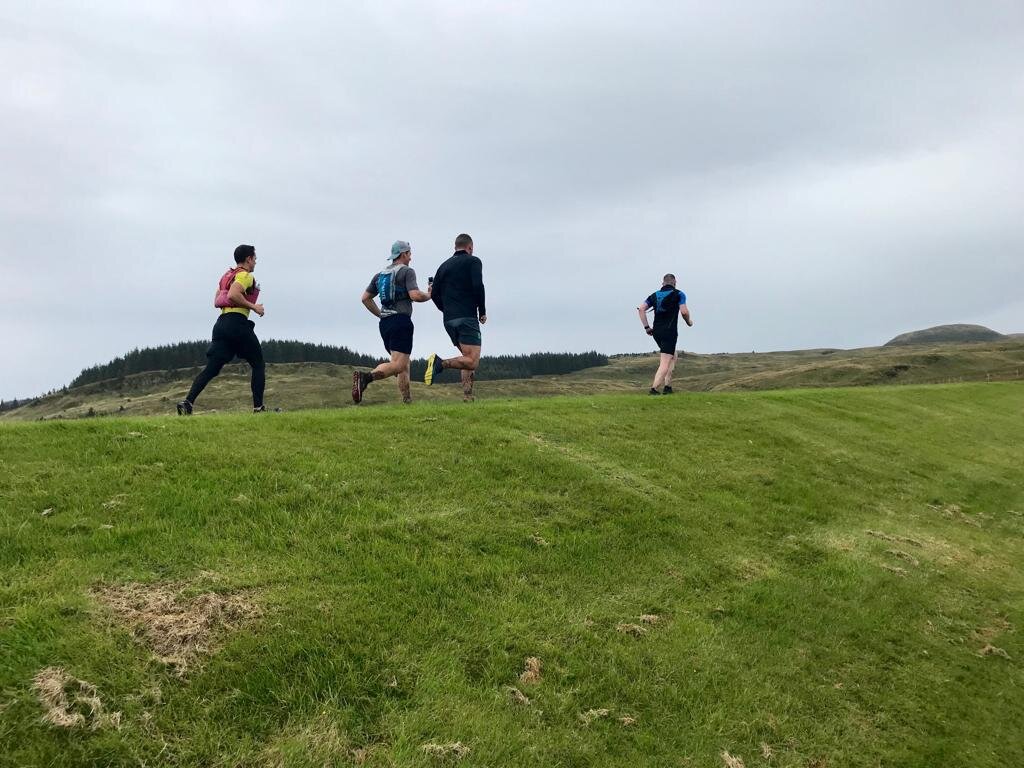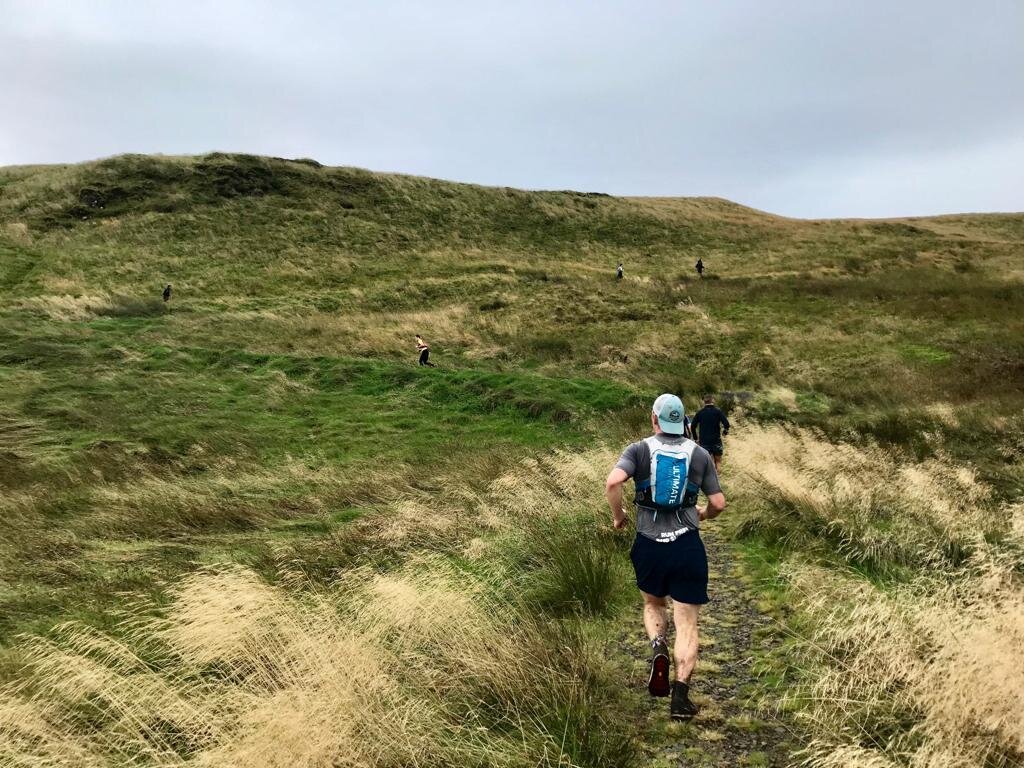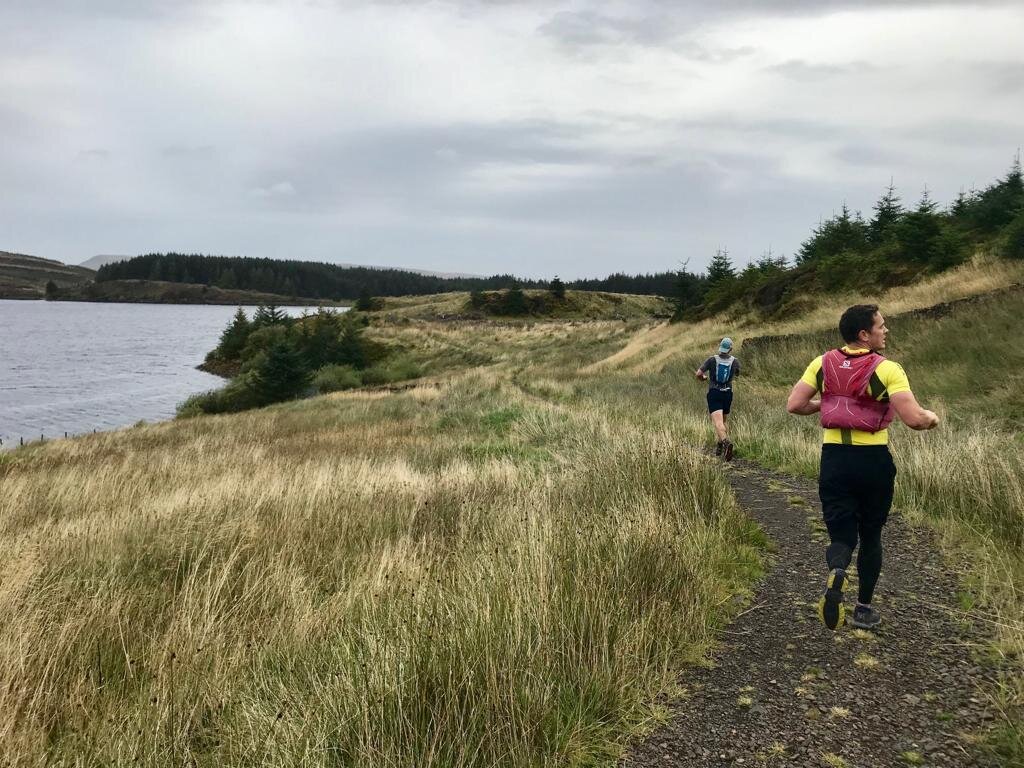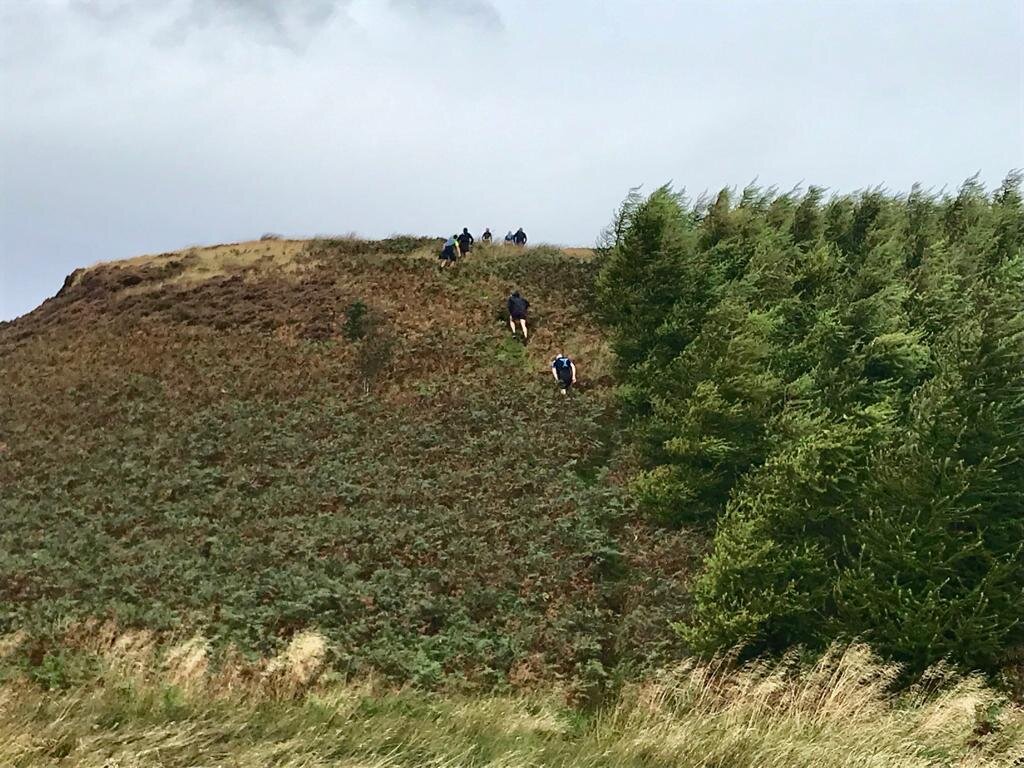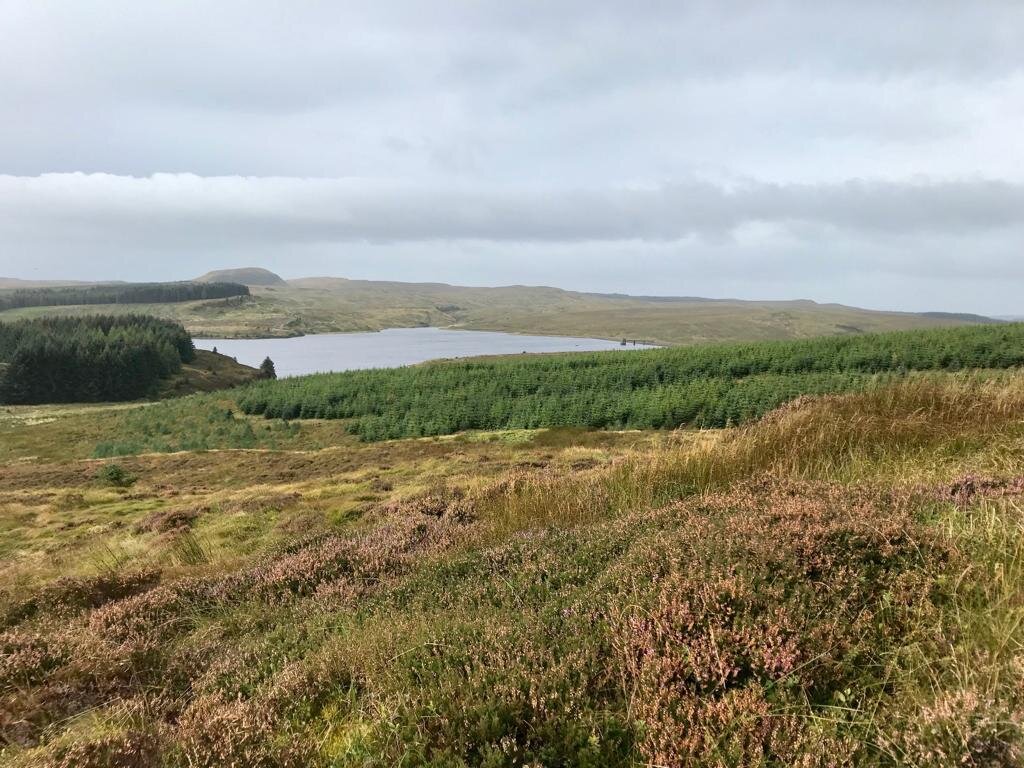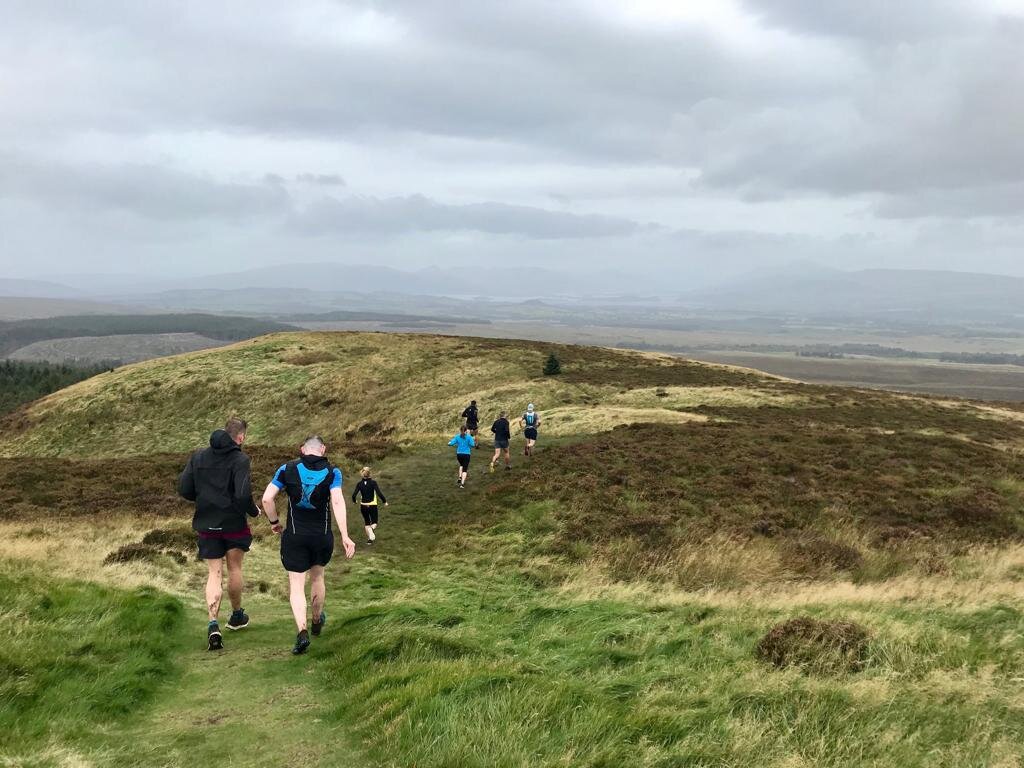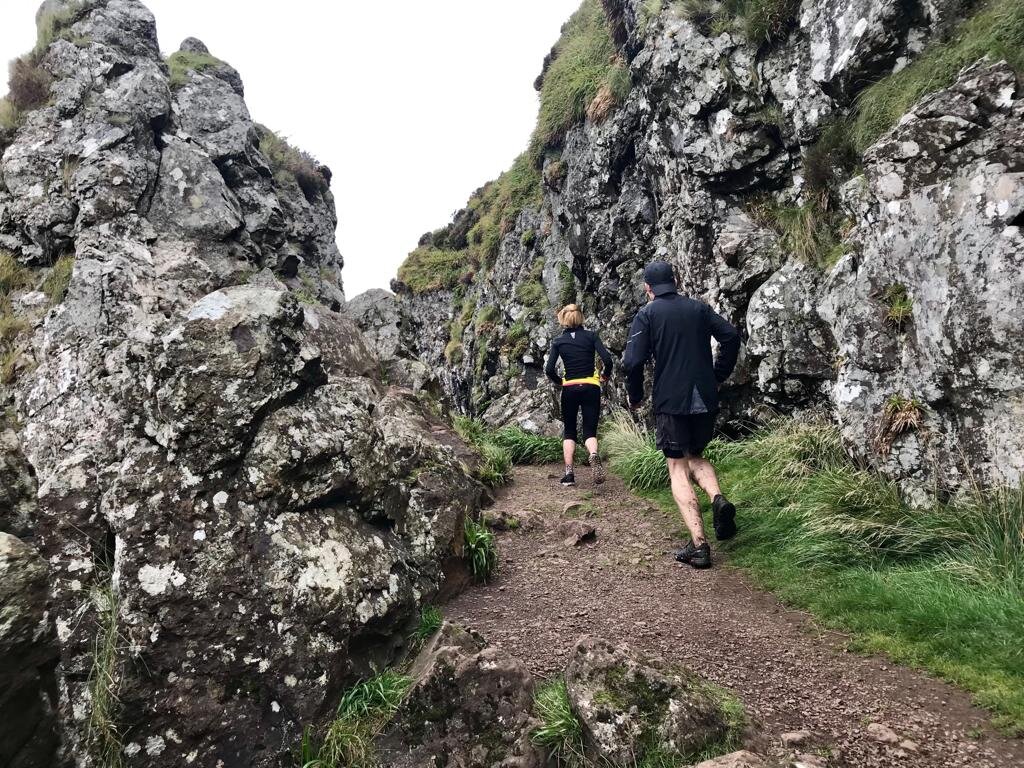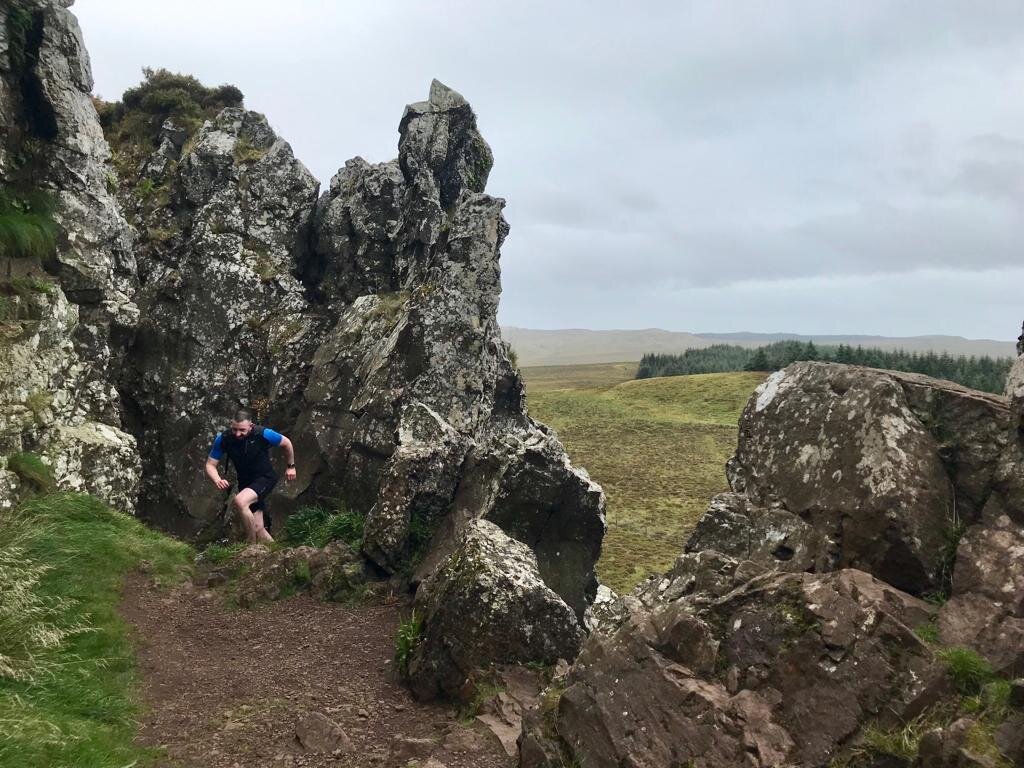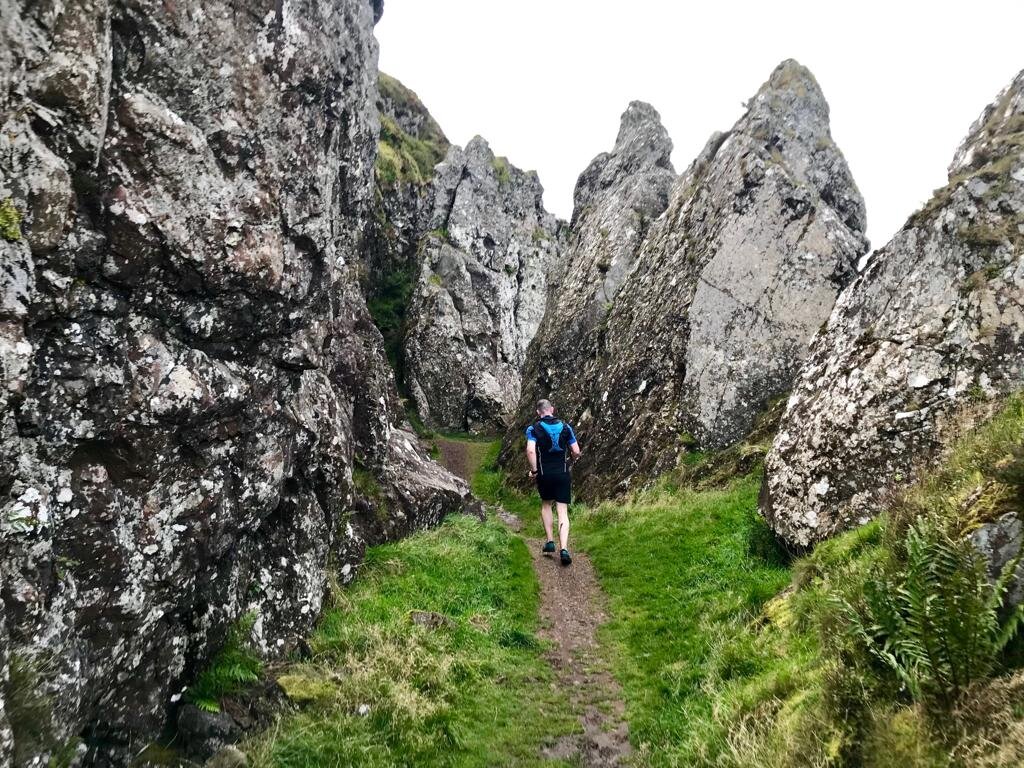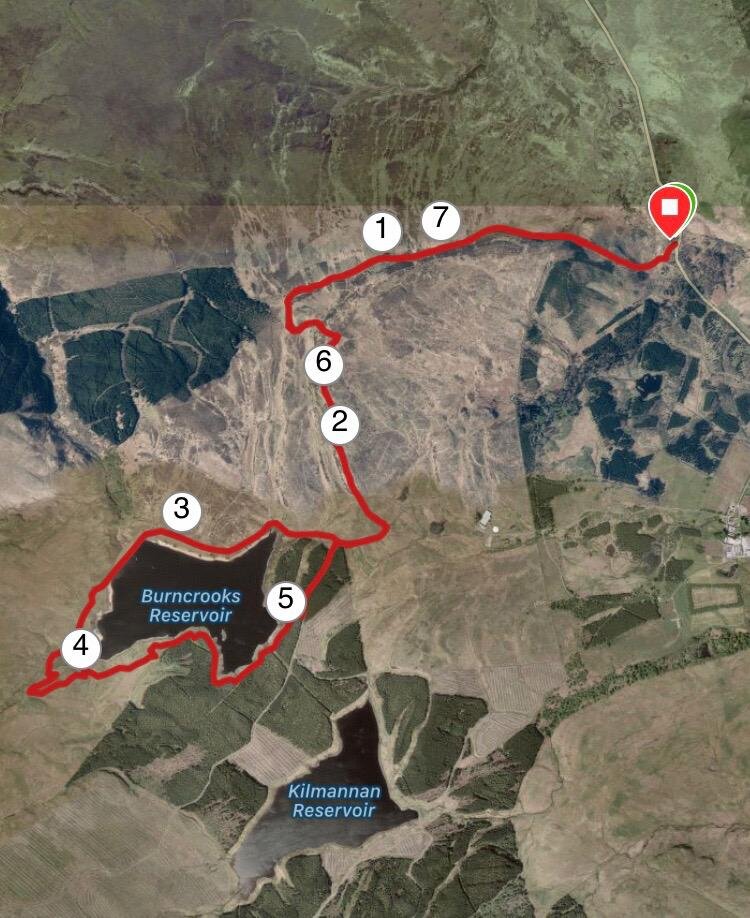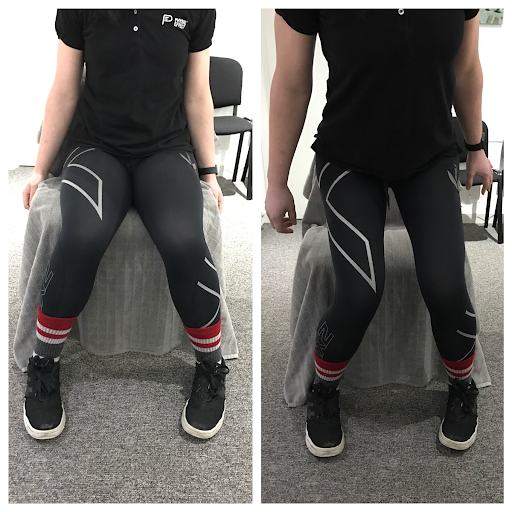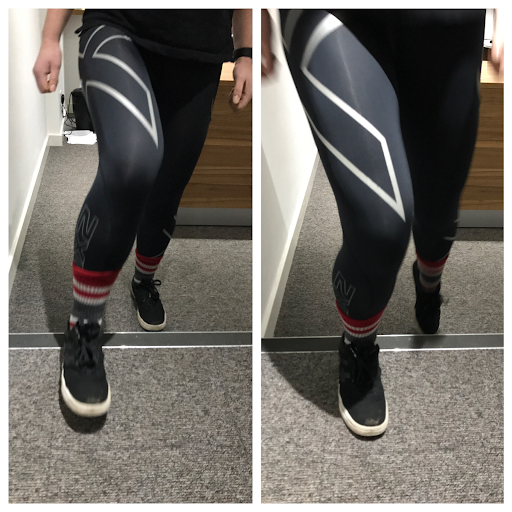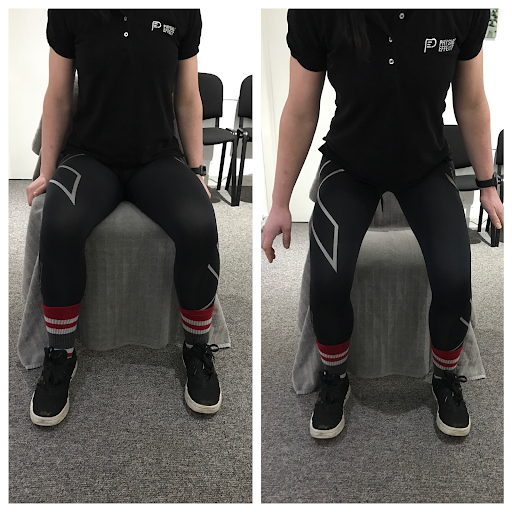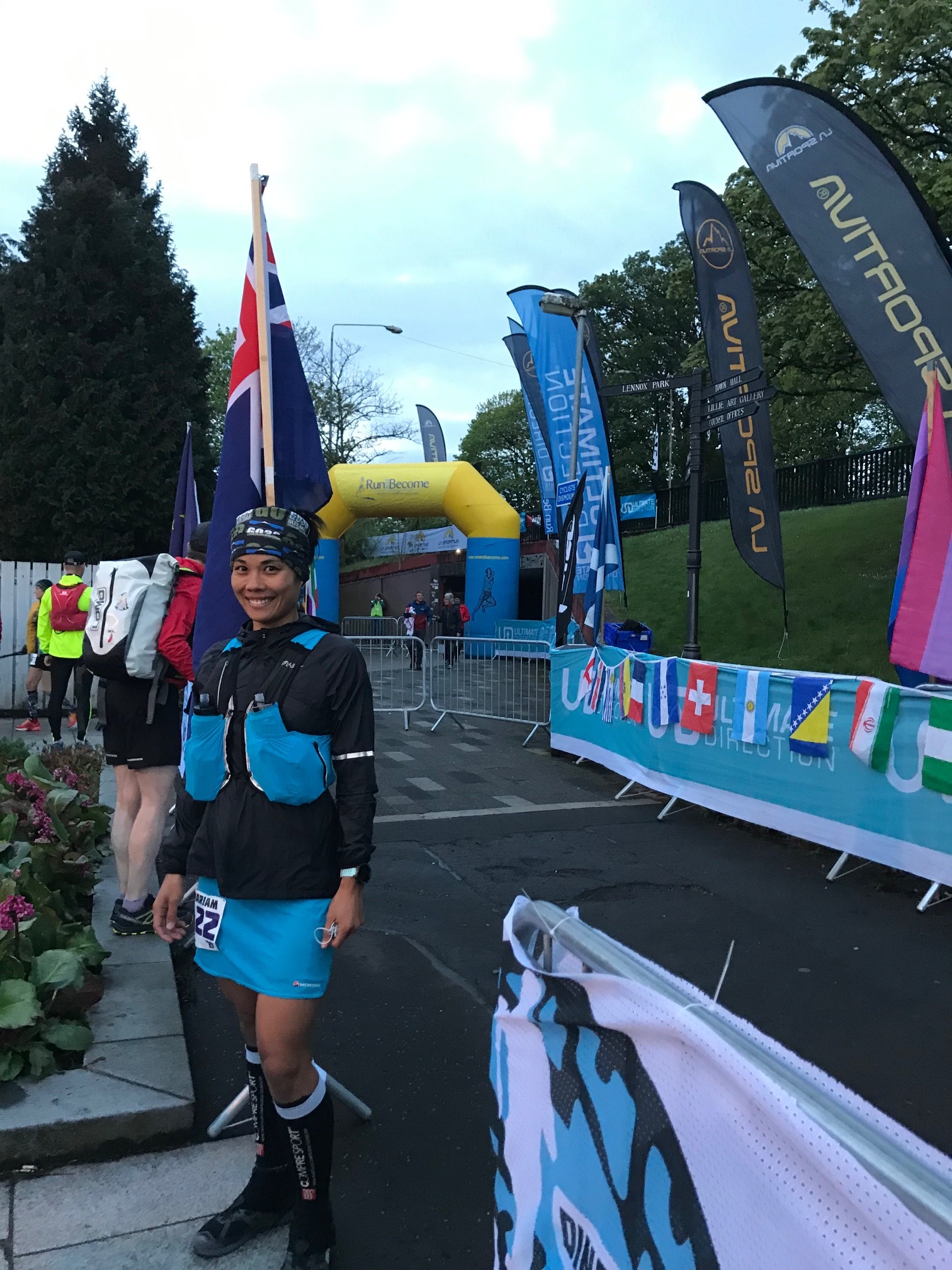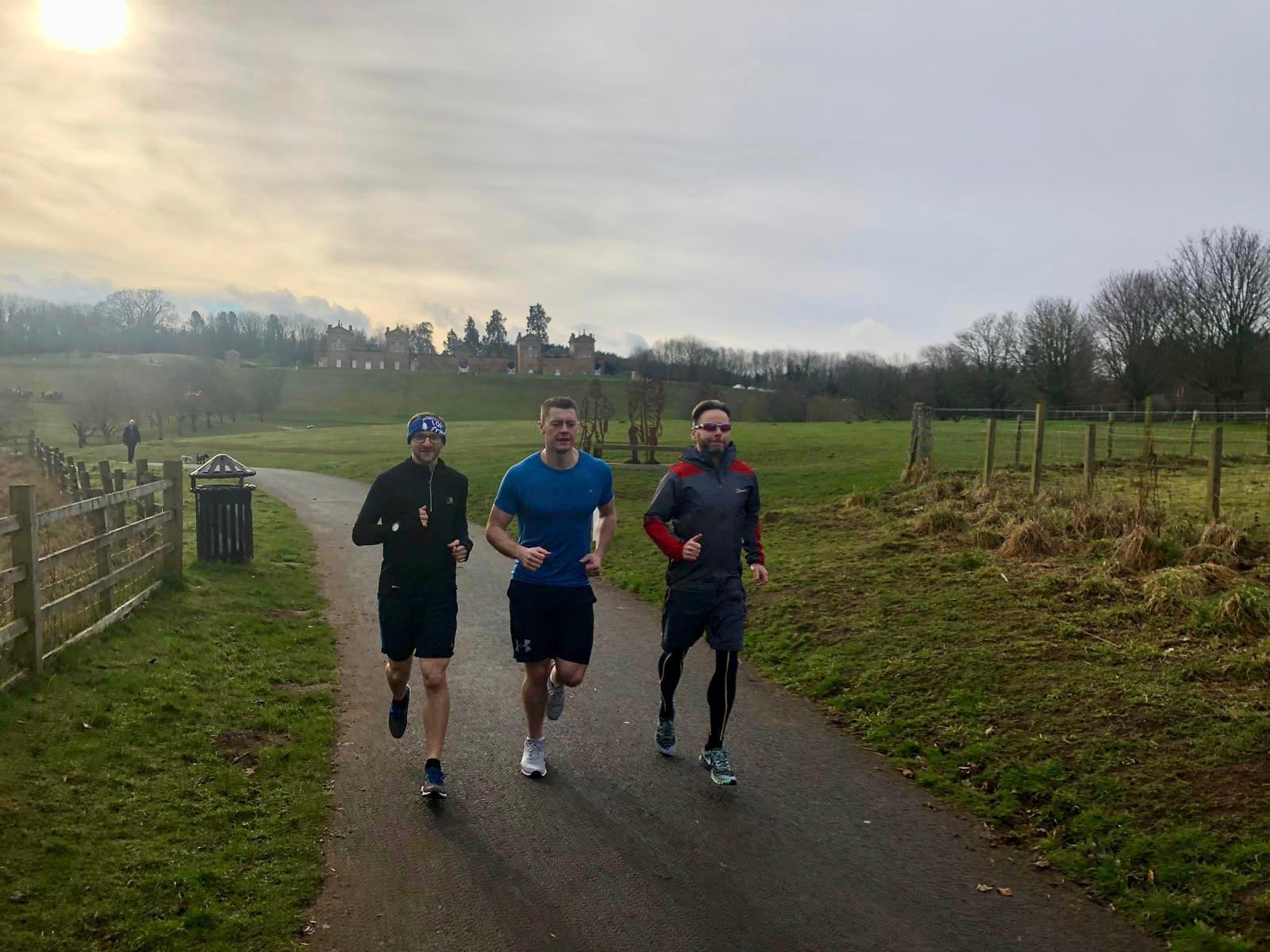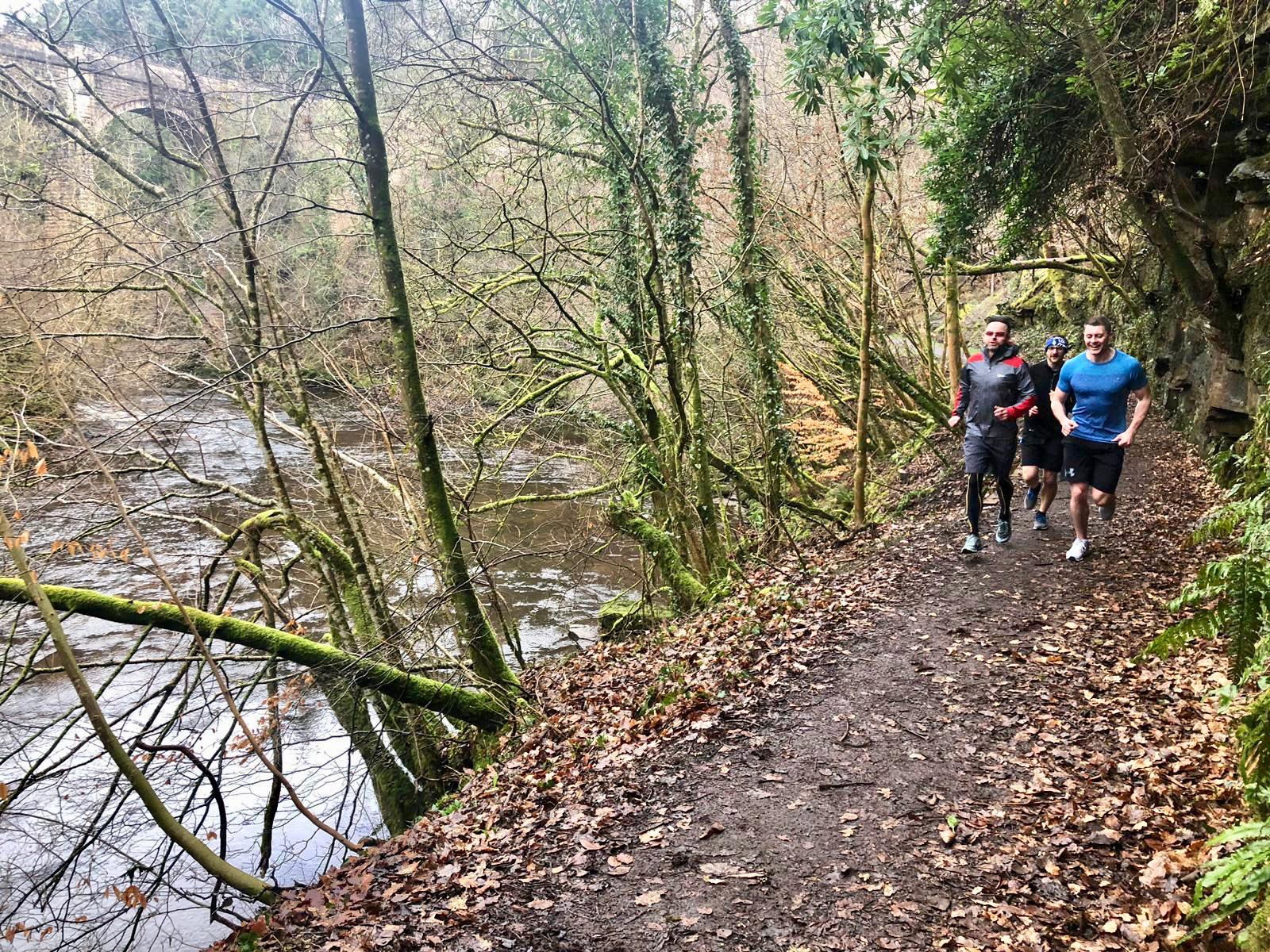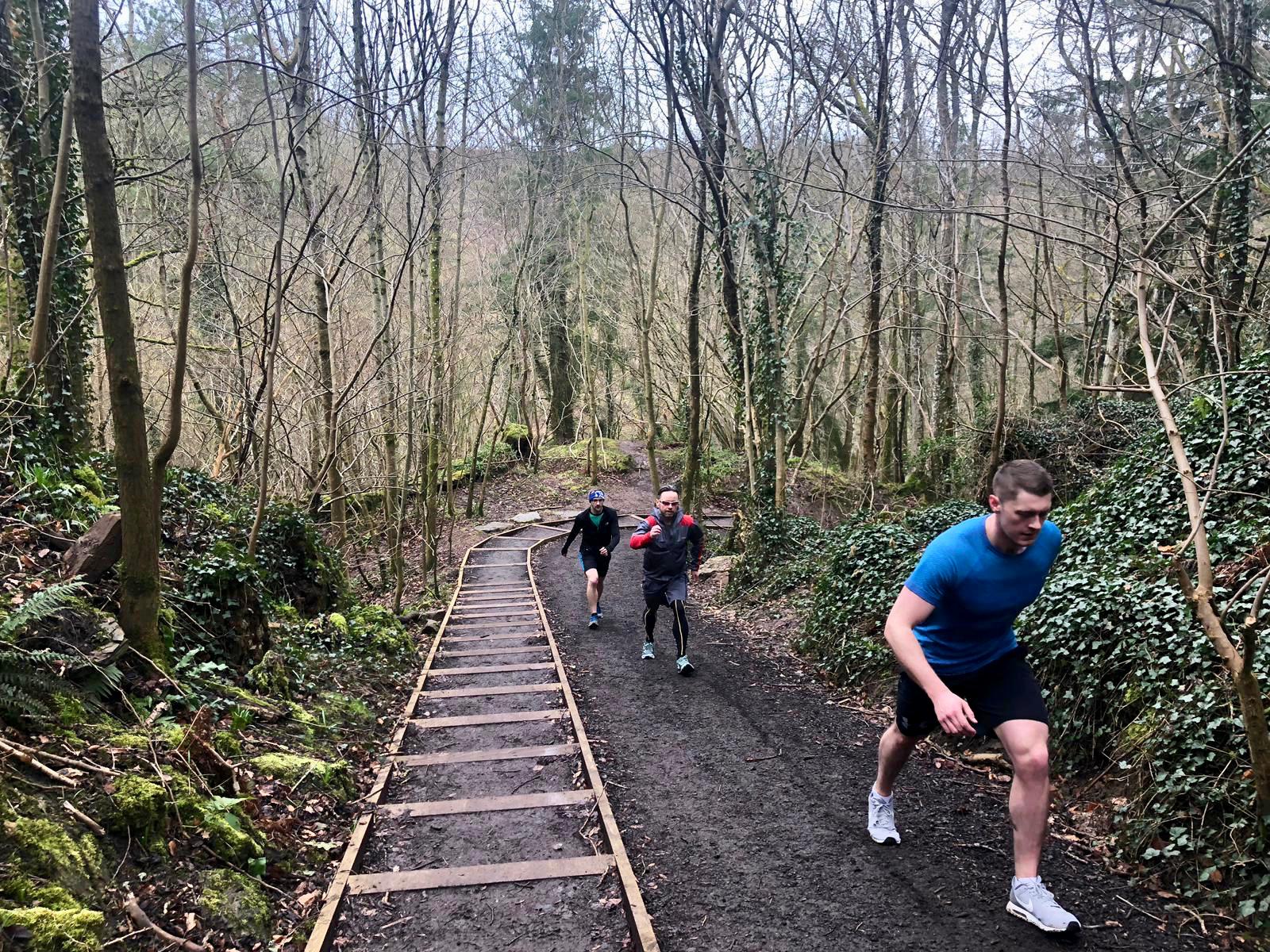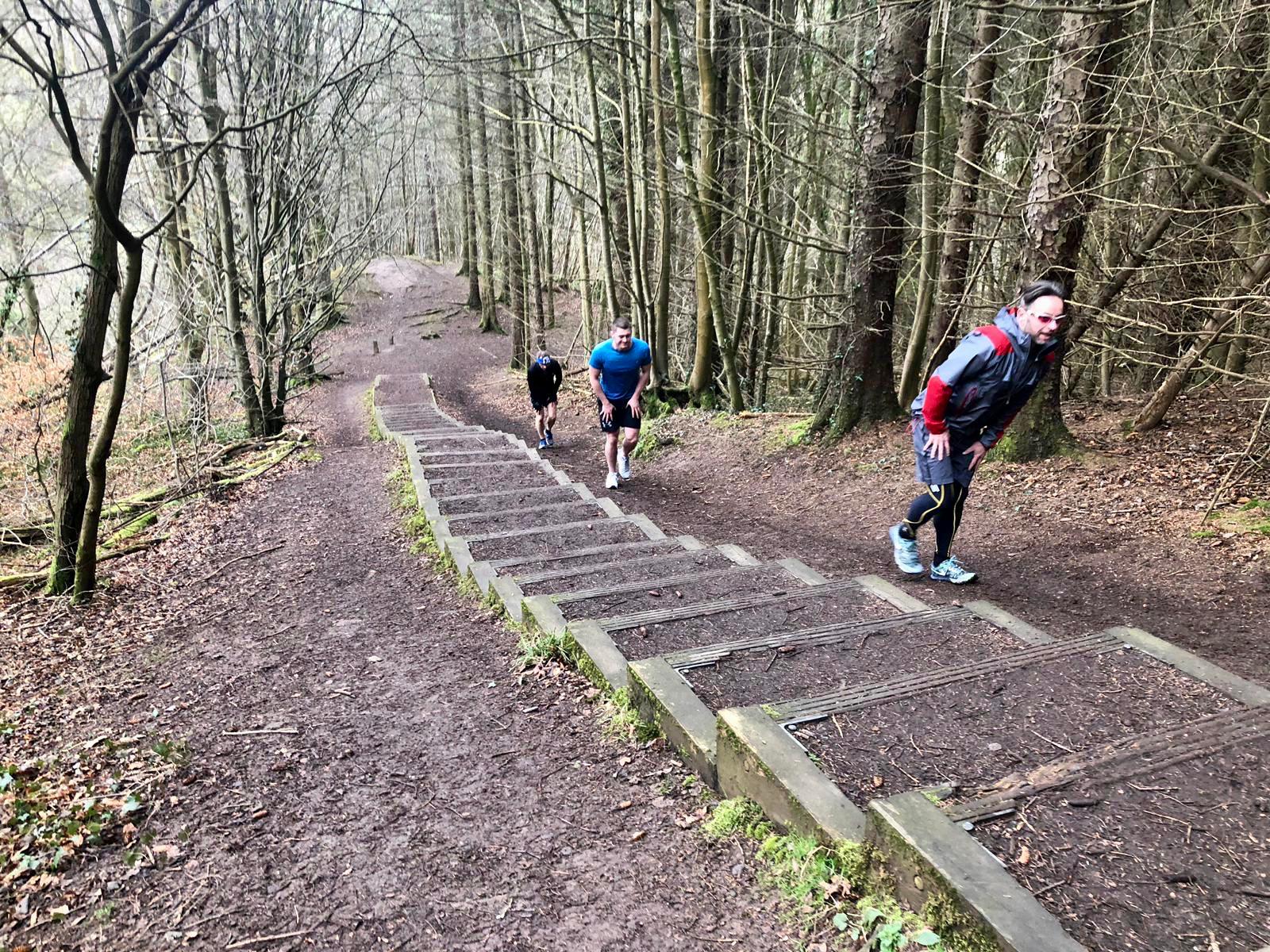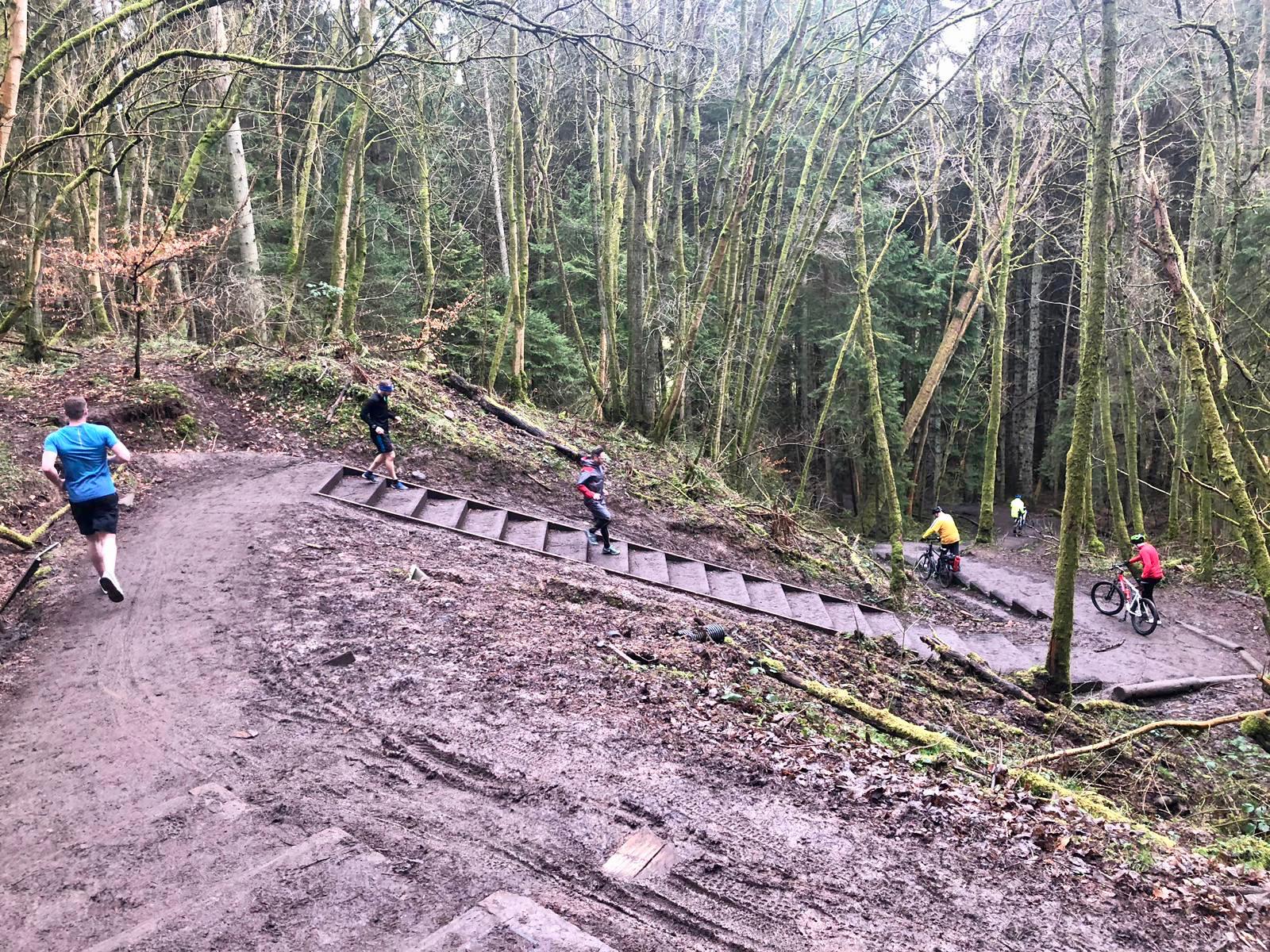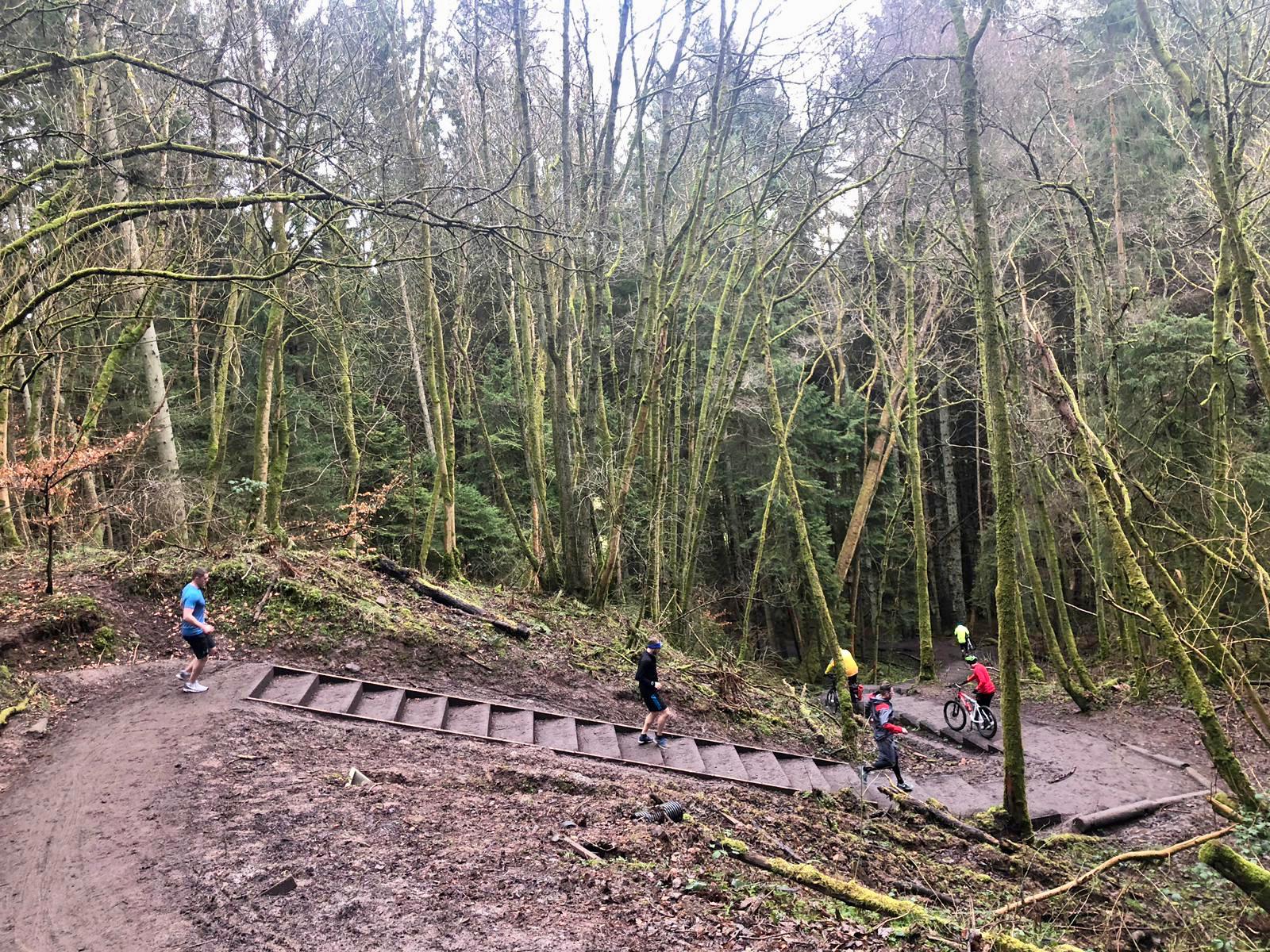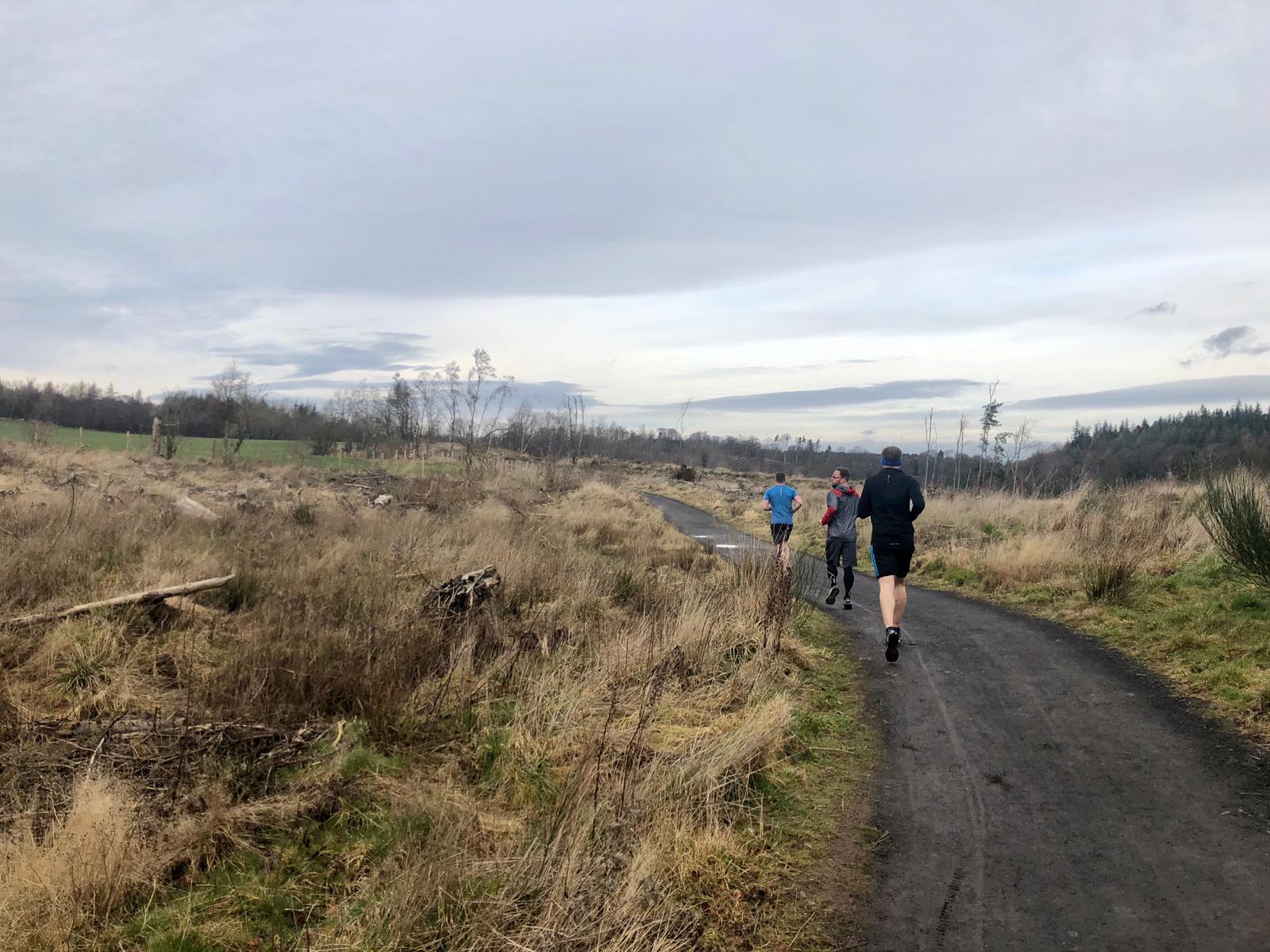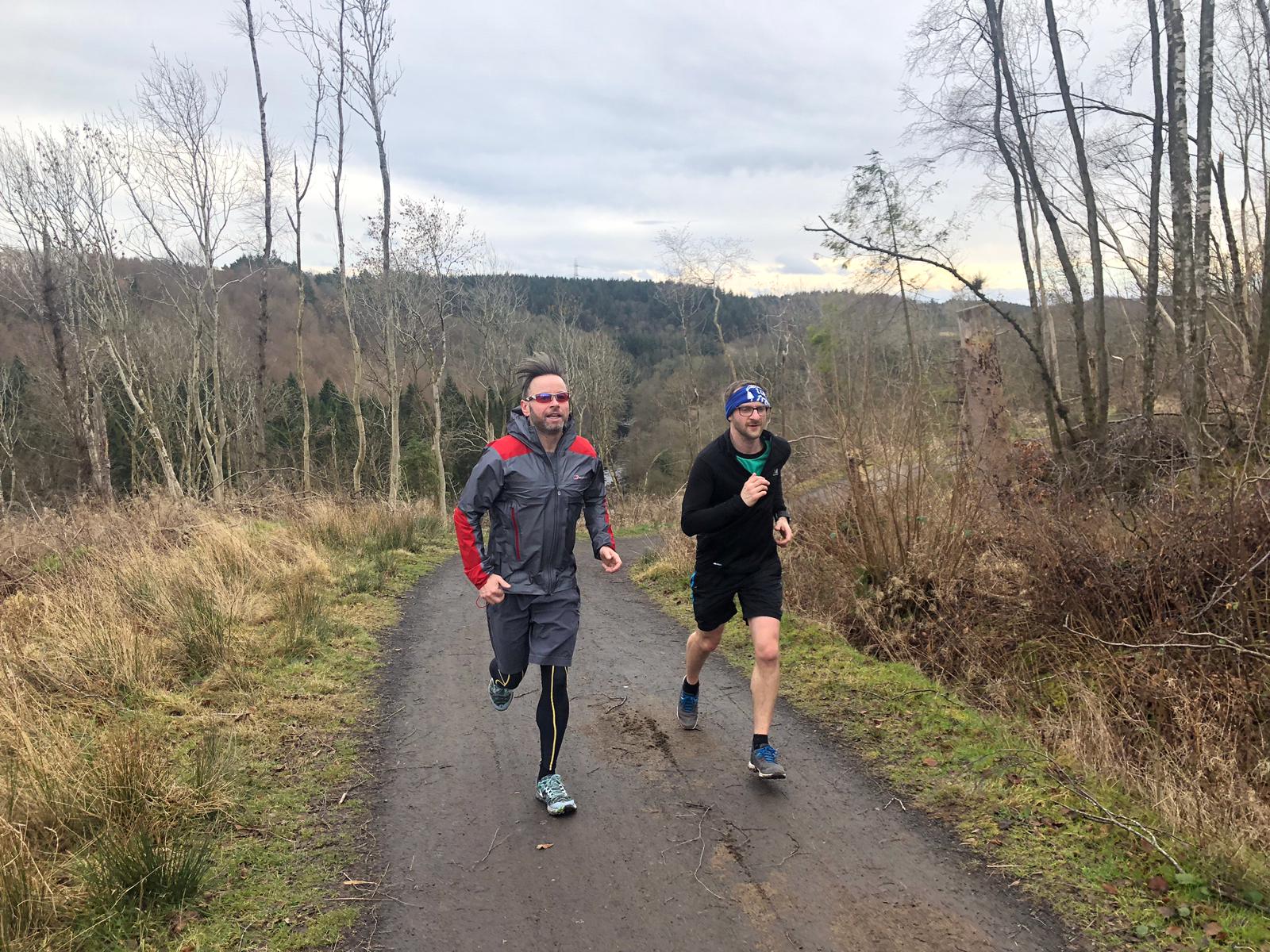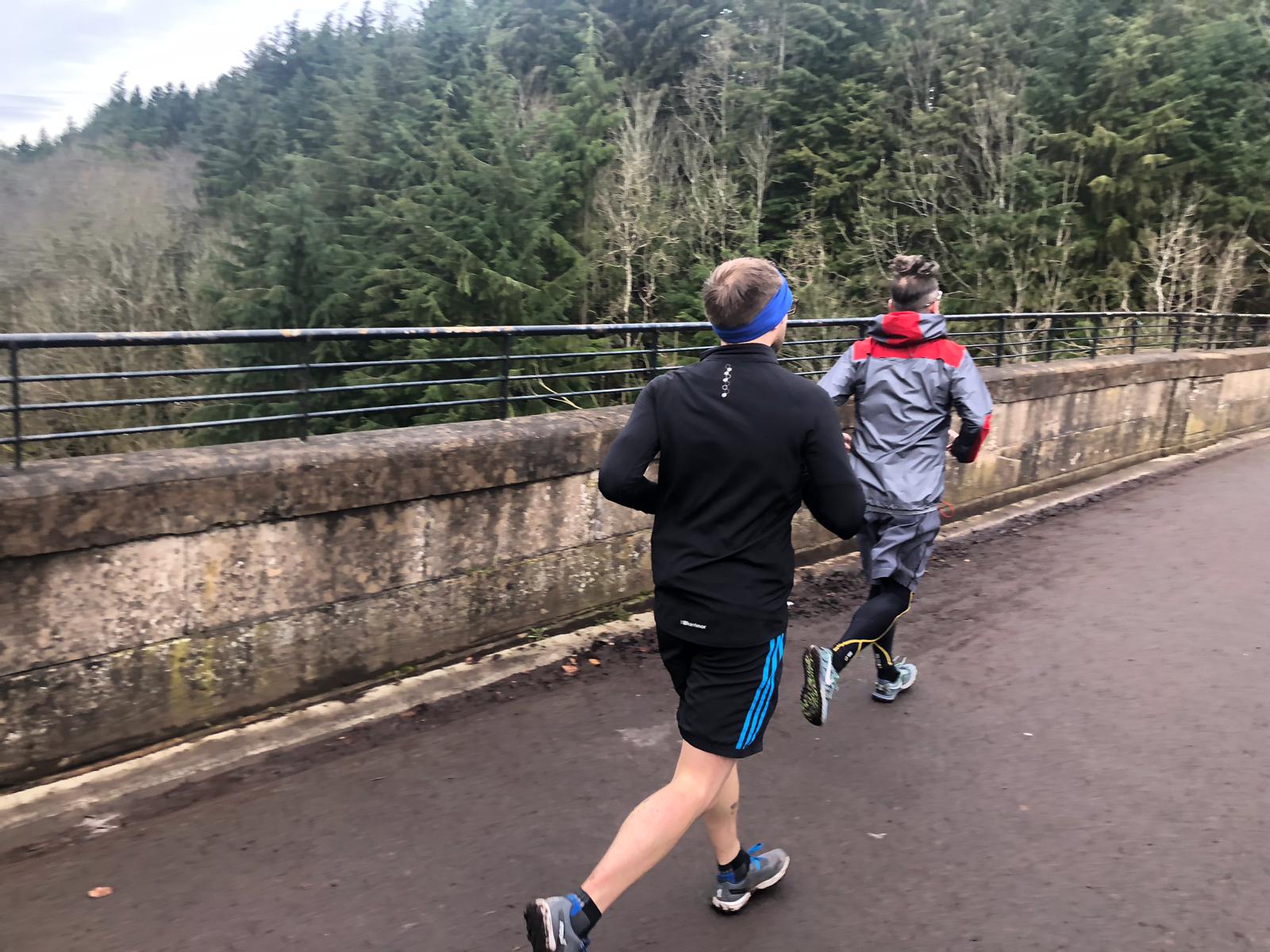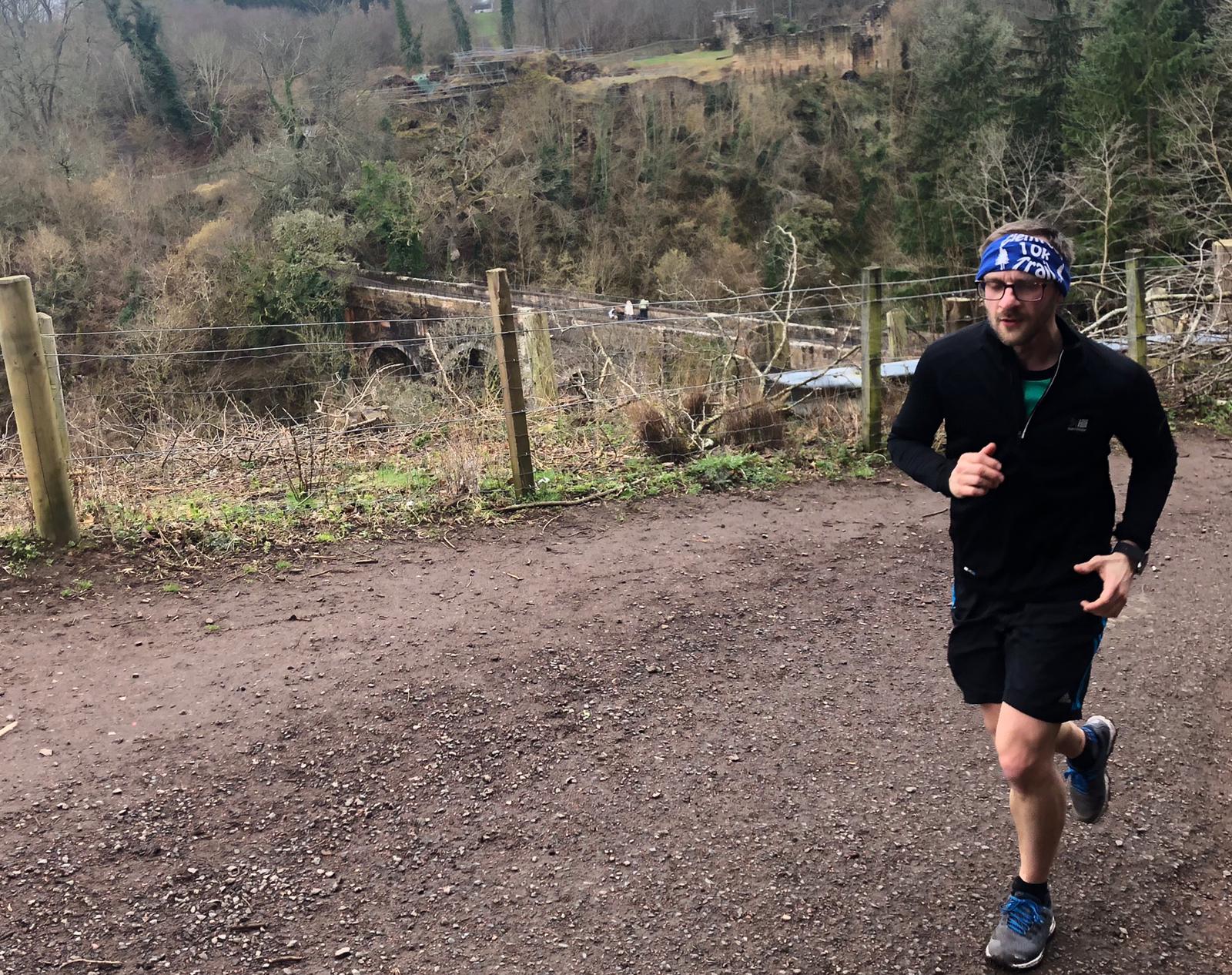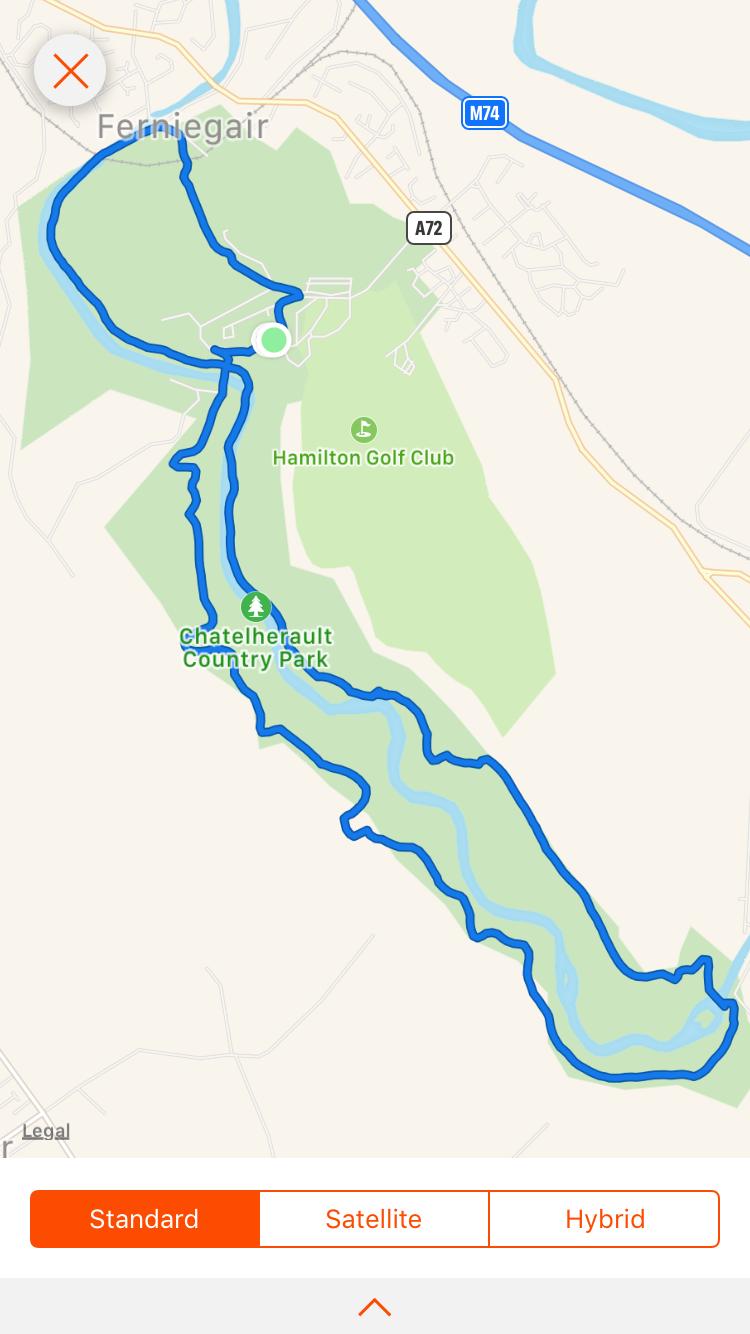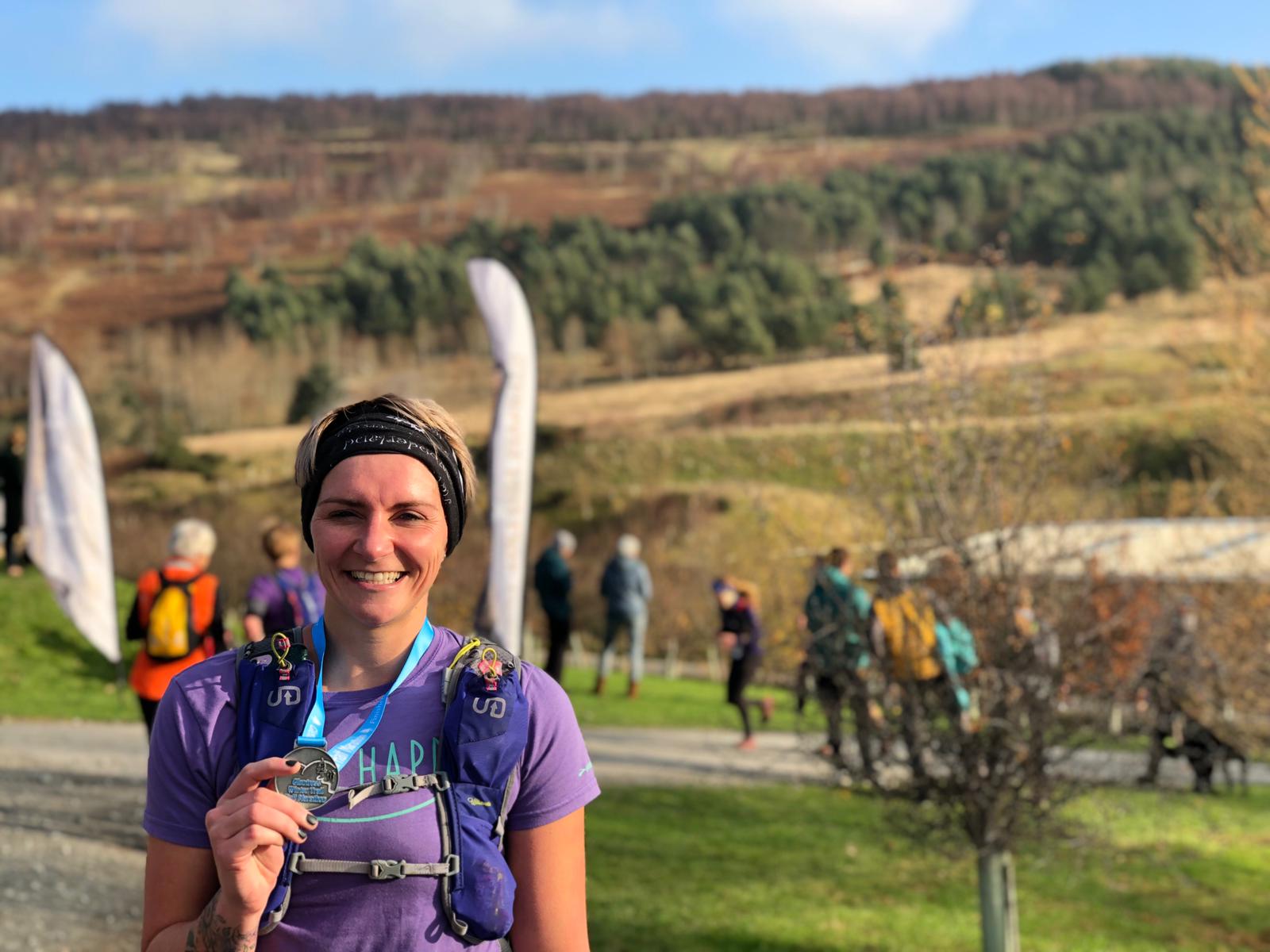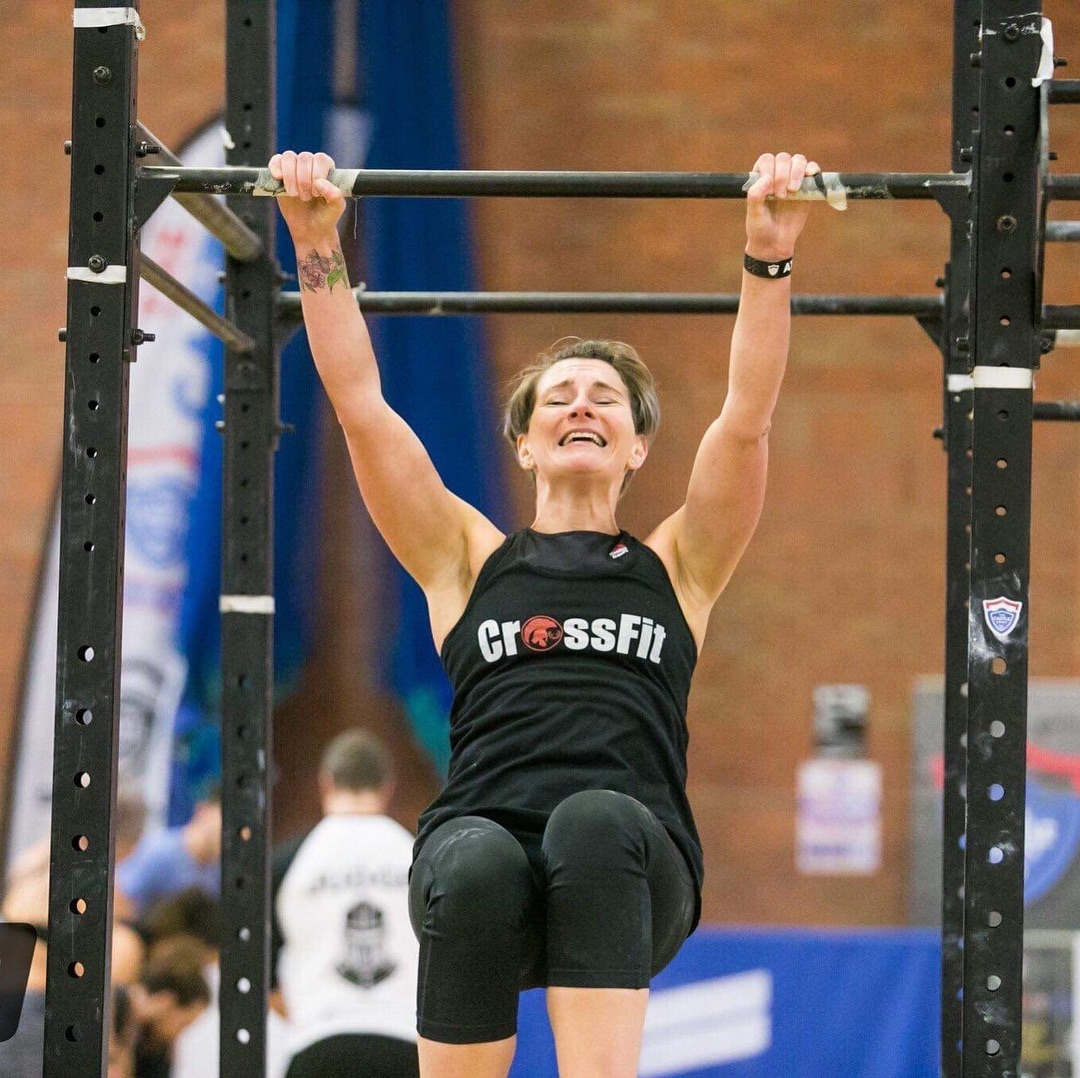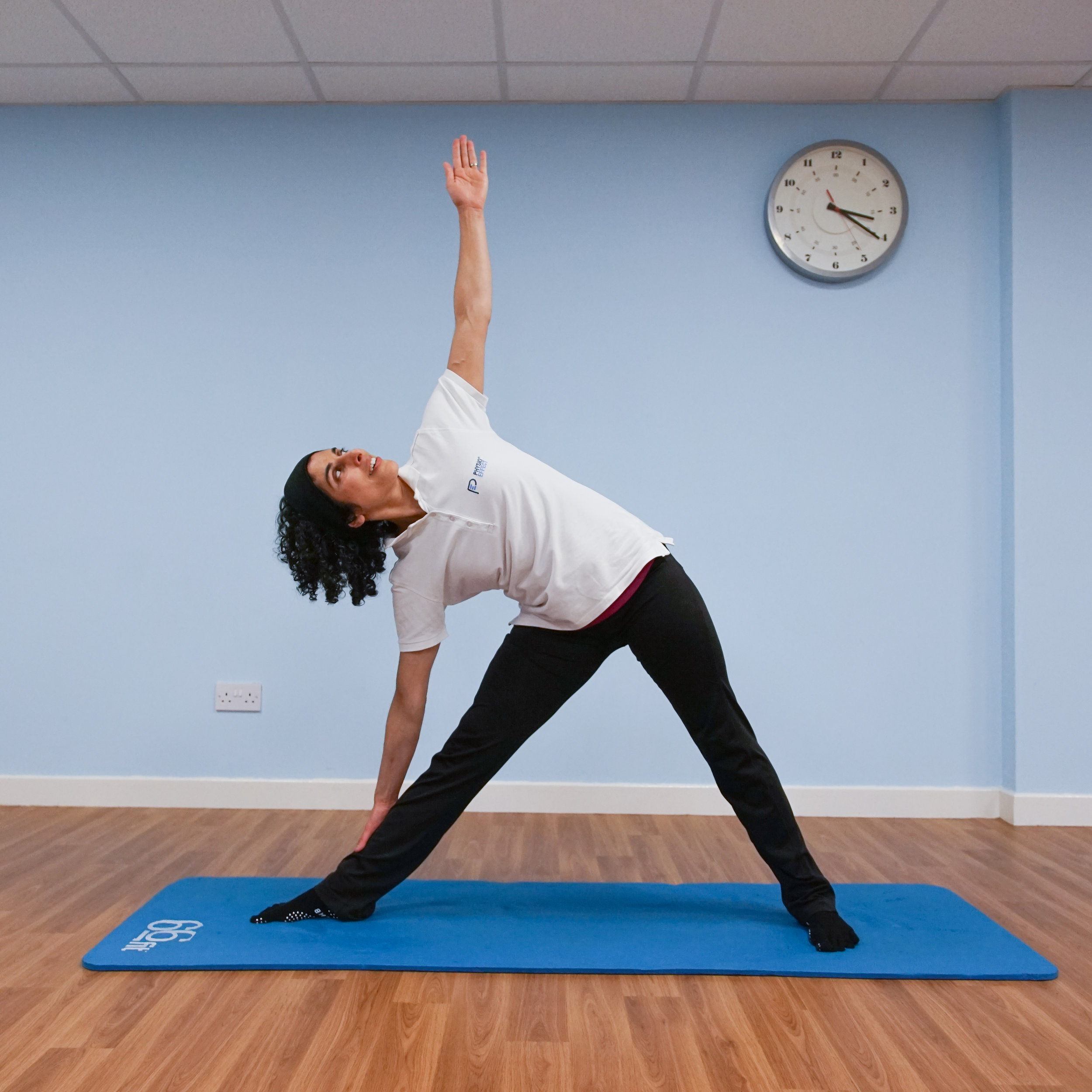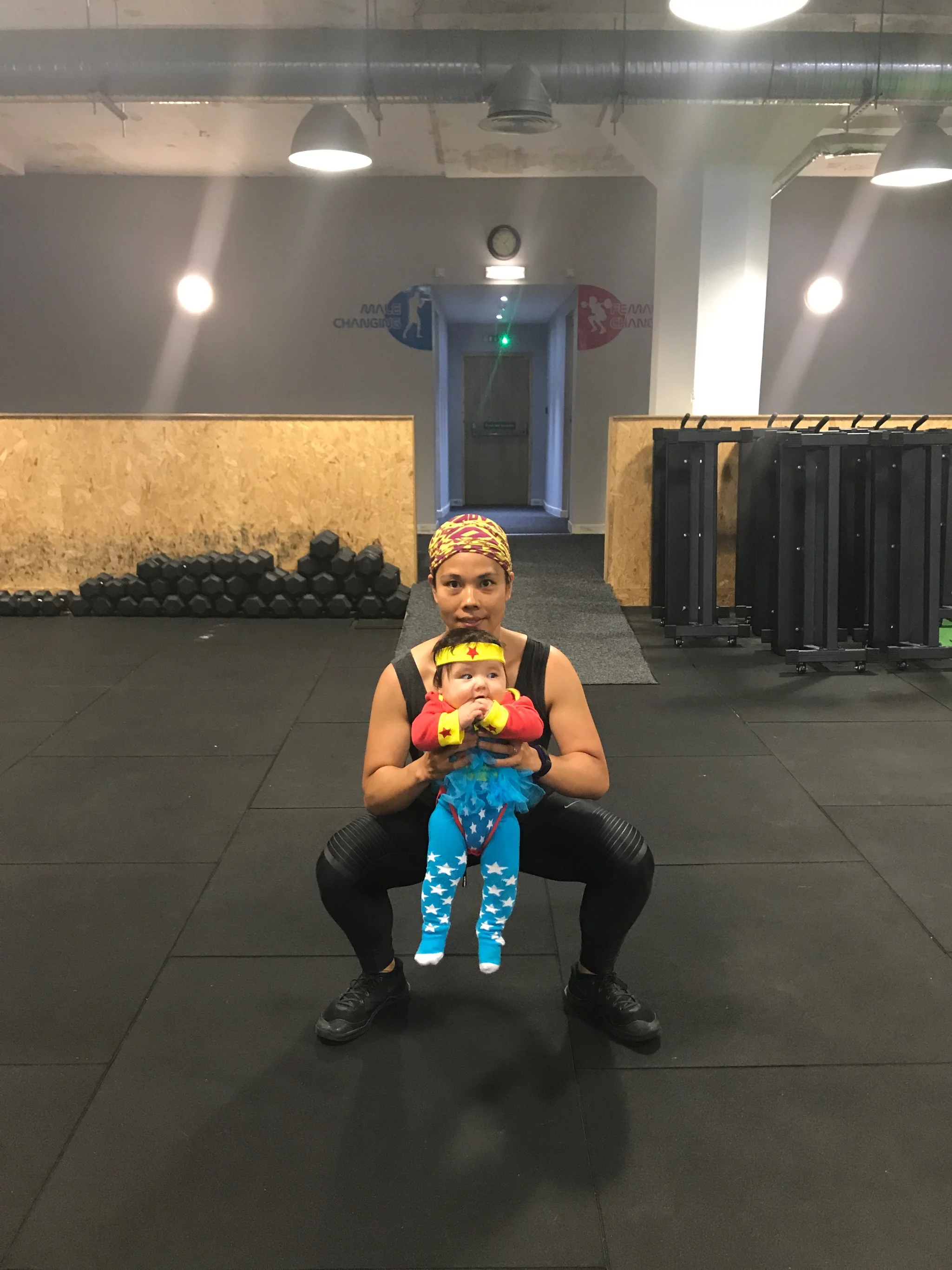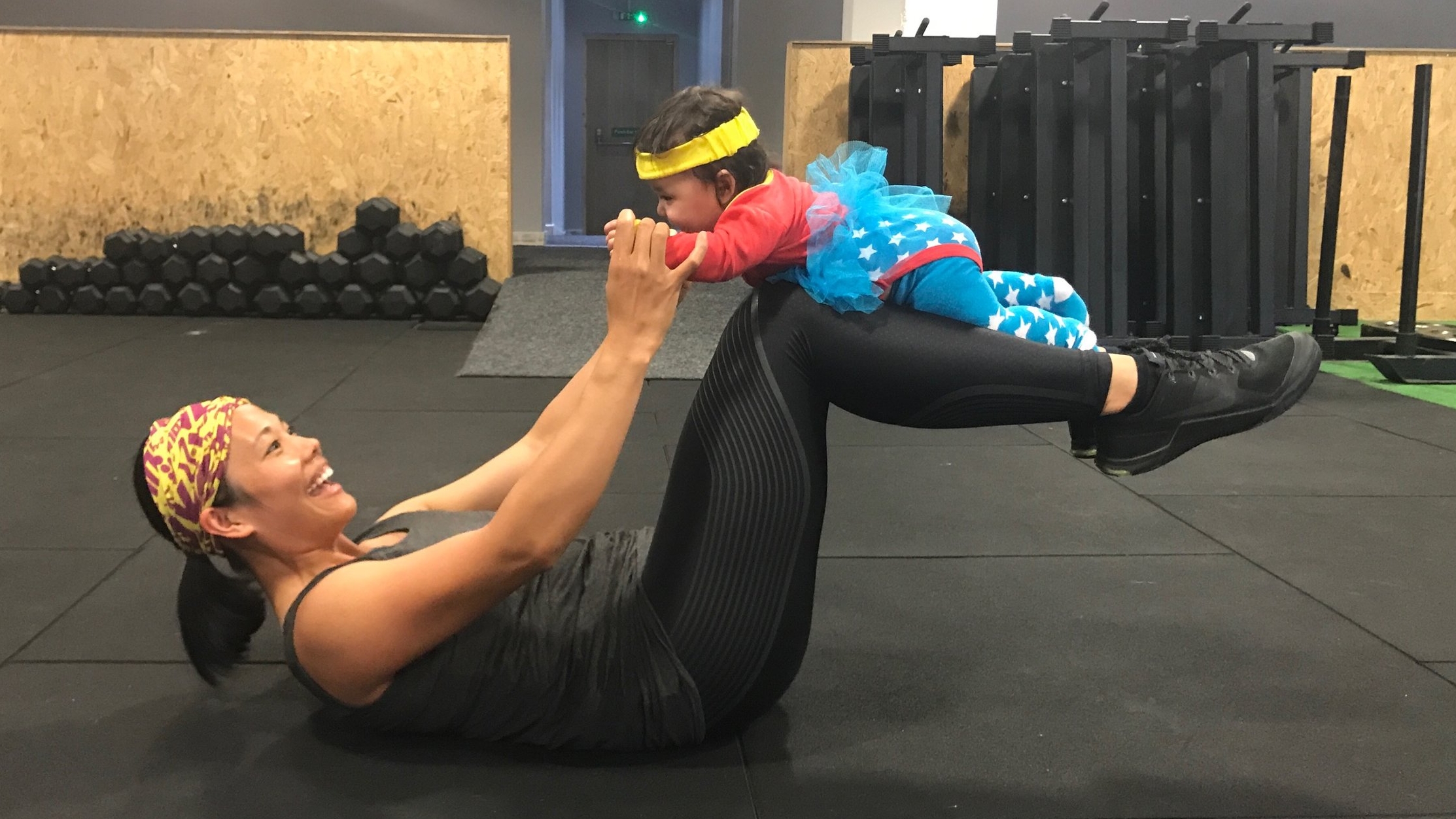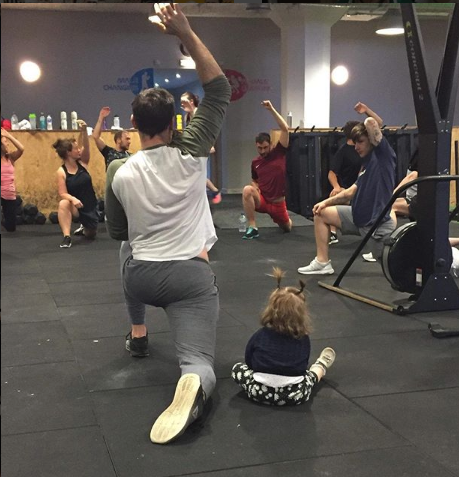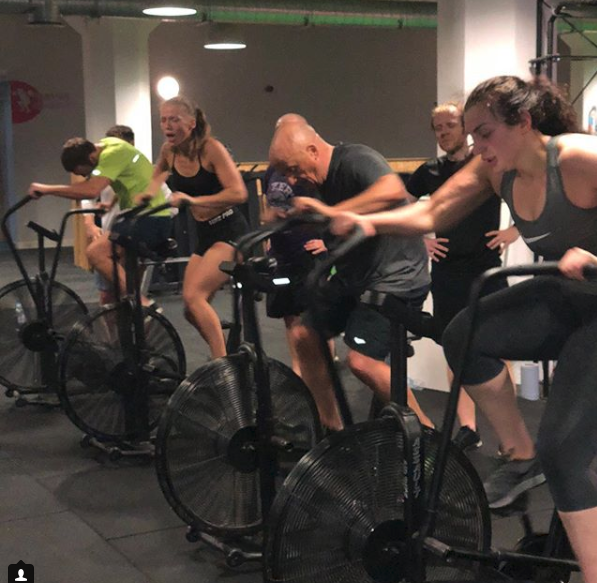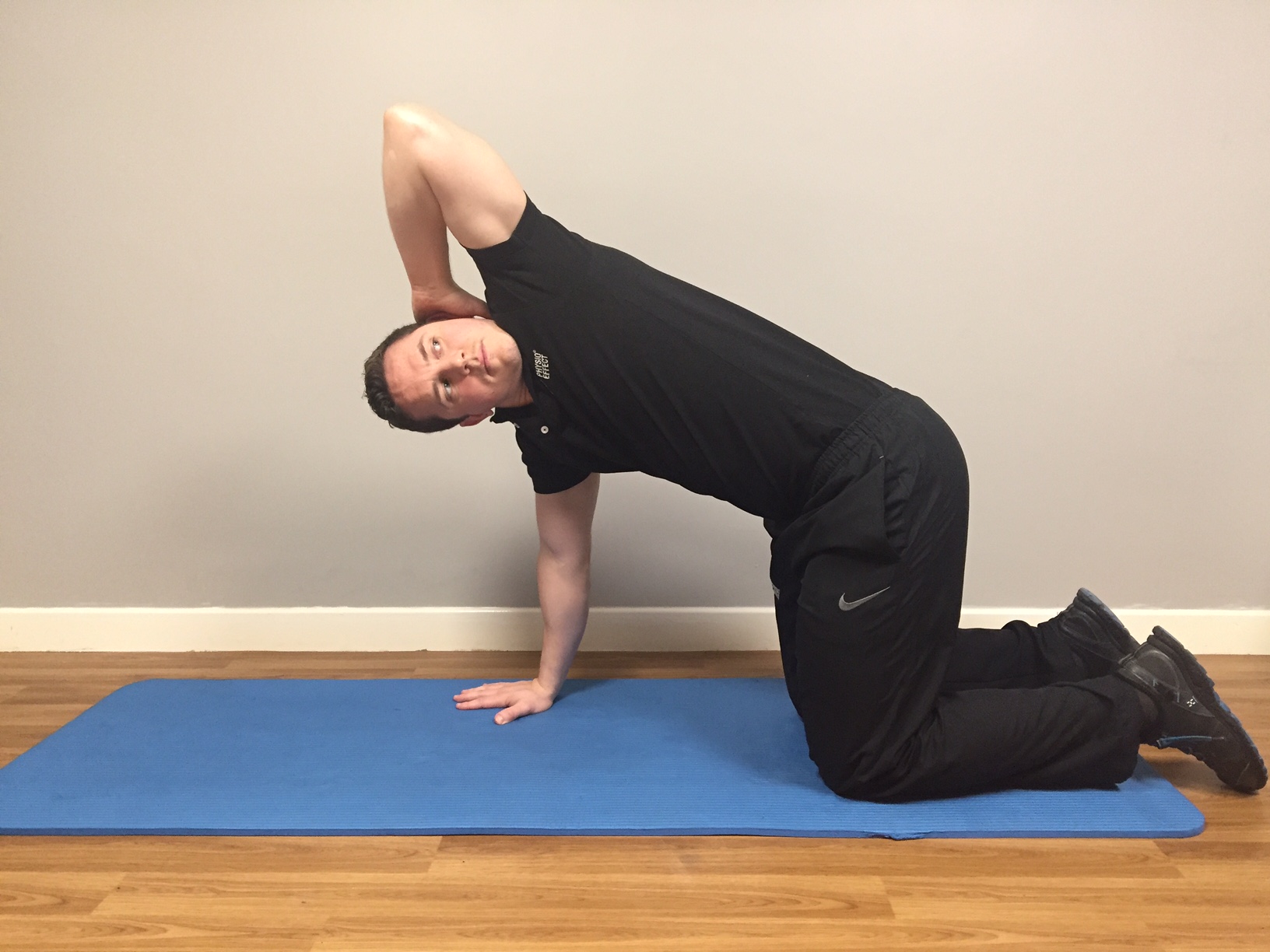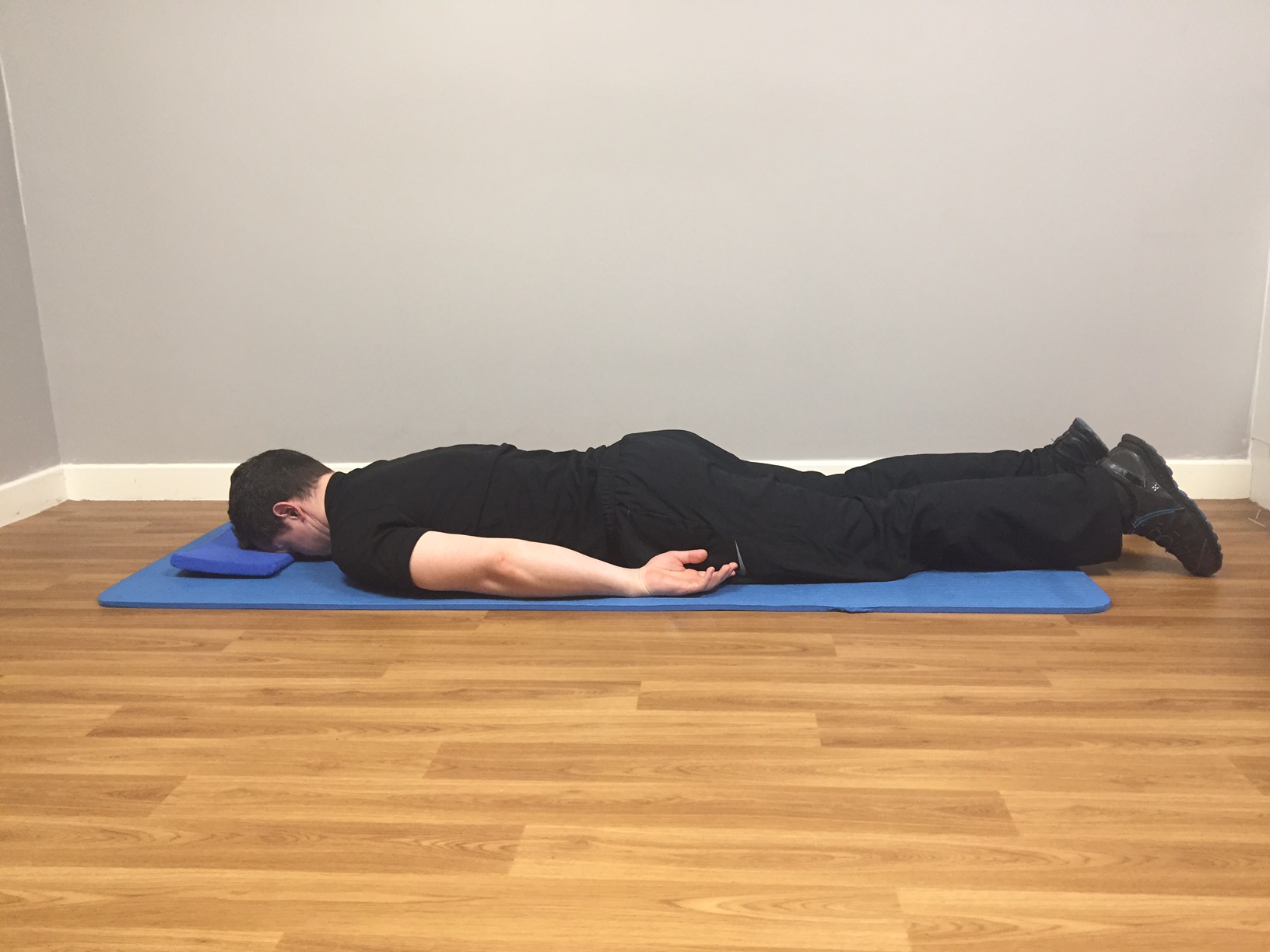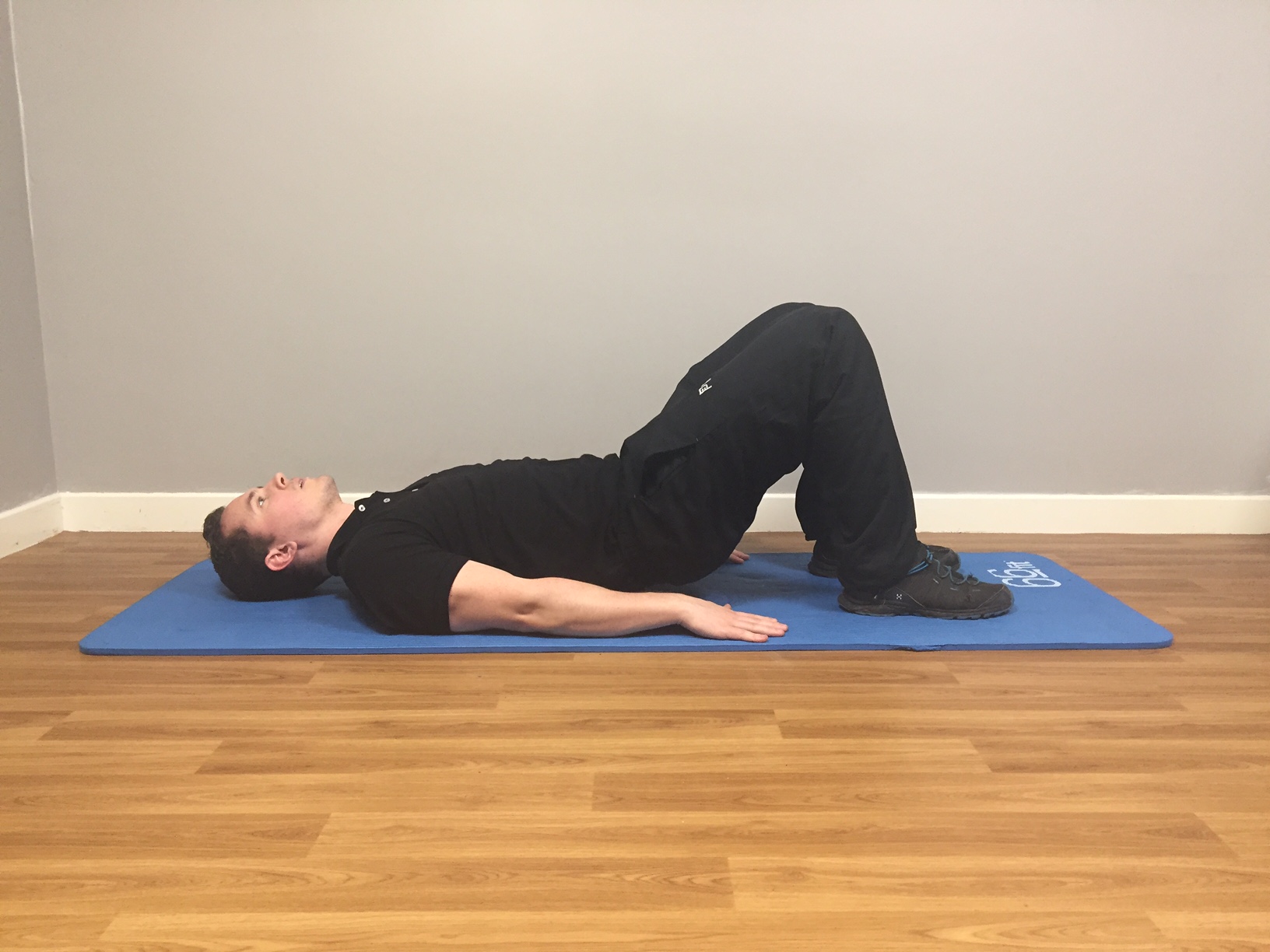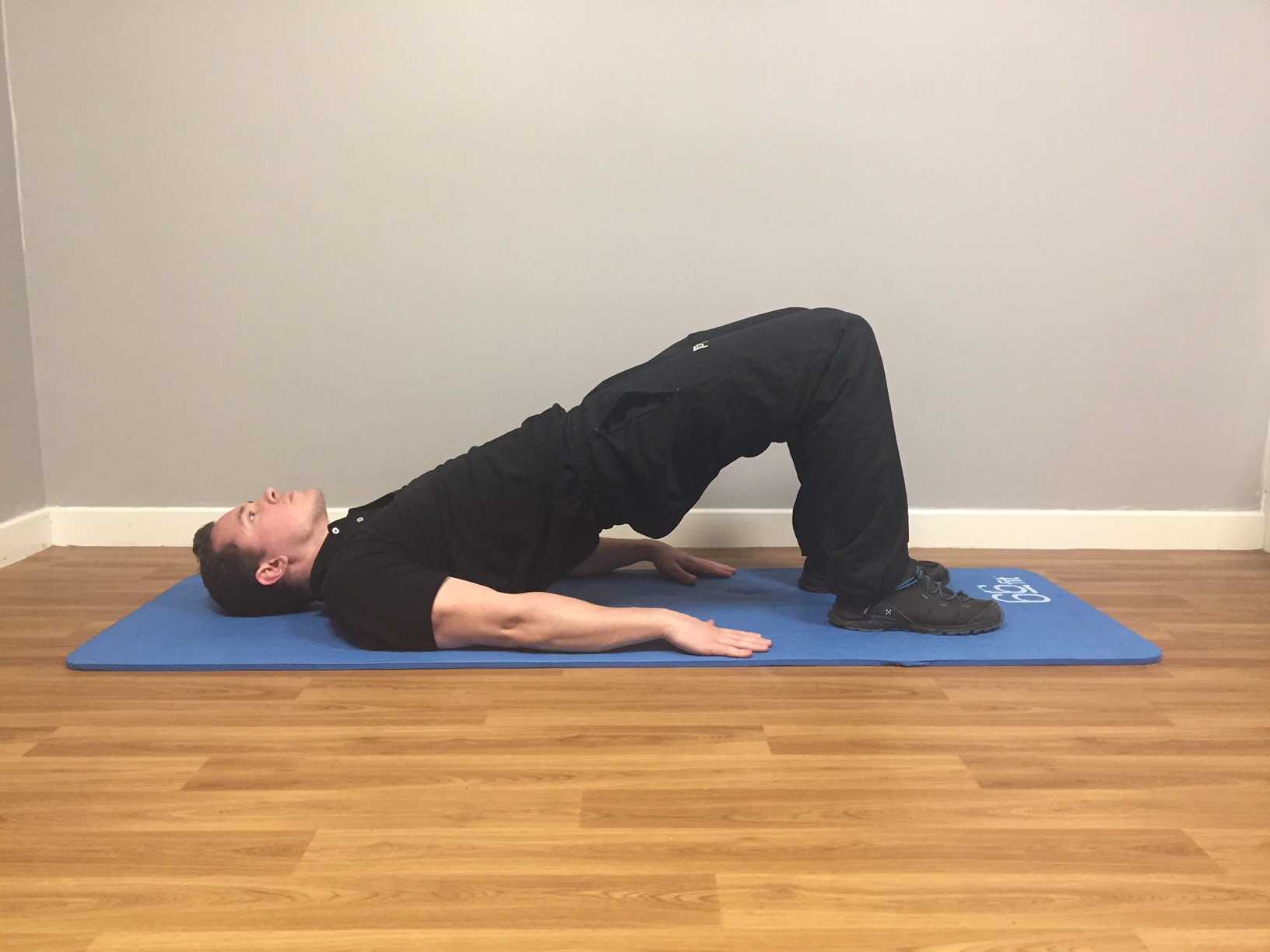Guest Blog - Reactive Training Gym
This week we have a guest blog from Robert Clarkson who runs Reactive Training Gym in Glasgow. Robert discusses the complexities of training men and women at different stages of their fitness journeys. He also outlines why he often recommends physiotherapy for prevention as much as a cure.
Train Safe
This week we have a guest blog from Robert Clarkson who runs Reactive Training Gym in Glasgow. Robert discusses the complexities of training men and women at different stages of their fitness journeys. He also outlines why he often recommends physiotherapy for prevention as much as a cure.
Meeting clients in the middle
Reactive is a private gym in the east end of Glasgow. We offer group coaching to men and women that is mainly strength training. Clients get a level of personal coaching that allows them to take on the ‘big weights’ area with confidence; something they might have avoided in bigger, more commercial gyms.
The challenge for me as a coach is to make sure the sessions cater to everyone's level in this setting. By testing clients every six weeks, I gauge what they can lift, swing, push, press and pull. This allows me to split them into smaller groups so that they can work safely for another six weeks.
All ages and abilities
One of the things I am most proud of is the range of ages and abilities Reactive caters to. Again, this isn't without its challenges. In coaching men and women from 20-75 years of age (yes, 75!) we have to be mindful of not only their individual goals but their general health and injury history.
A young client that has never set foot in a gym in their life might be more vulnerable than someone who is older but has trained on and off over the years. Because someone has a niggling hip injury doesn't mean they are less able than the client that is younger but sedentary until they join. It's a case of constant observation and meeting people in the middle. Pushing them, but not to the point where you risk setting them back through injury.
What clients do outside the gym matters
What clients do outside the gym counts. Reactive members receive support outside the gym via our app. It includes nutritional advice, at home exercise and they can chat to coaching staff via the app if they have questions about their training. There's also a closed Facebook group, I regularly hold live Q&A's via Facebook Live too and members themselves provide peer to peer support. It is a thriving community. But training can come undone outside the gym.
Encouraging clients to look after themselves outside the sessions isn't easy. They all have busy lives. They are often used to putting themselves last. It can be why they end up having to make a change and why their health and well-being has suffered. And after they've come to three or four sessions a week, there's not much time for anything else! Physiotherapy is often something clients would only consider if they were injured.
If a client has anxiety about injuring themselves or if they need a helping hand with their mobility, I recommend physiotherapy.
It's my job to address improper technique. As a gym owner, I also invest in good quality equipment and upgrade it regularly. I emphasise the importance of rest days and there are often two coaches at each session, both with the client's safety in mind. But I believe in clients helping themselves too. I tell them that by seeing a reputable Physiotherapist, they can develop their own injury prevention strategy. This will help them to gain confidence when it comes to pushing themselves and moving forward with their training.
Prevention is better than cure
The main point I want clients to take away is that prevention is better than cure. Taking all possible steps to prevent injury will ensure clients are in the best position to maintain consistency needed to be successful in their training.
To learn more about what small group coaching and strength training, see: reactivetraining.co.uk
Run report - Trail With Us - Physio Effect Trail Running/ Walking Group - Sunday 15th September
This month we planned a trail session combining the well-known route up to the Whangie from the Queens View Car Park (10 minutes past Bearsden) with a short section of the John Muir Way and a loop of the Burncrooks Reservoir.
This month we planned a trail session combining the well-known route up to the Whangie from the Queens View Car Park (10 minutes past Bearsden) with a short section of the John Muir Way and a loop of the Burncrooks Reservoir. We had another decent turnout of new and familiar faces and headed up the hill at about 0910 after meeting at 0900. Although a little cold in the wind initially, we soon warmed up by the hill run and treated to nice views back East of the Earl’s Seat and Dumgoyne in the Campsies as well as North providing views of Loch Lomond.
It was muddy enough on the way up the hill but everyone seemed to handle that well and made steady pace with running and power hiking. We went through the Whangie which is always a nice photo opportunity and hard to believe this cracking rock formation is just on our door steps. Another short climb followed and we took an obligatory group picture at the trig point before pushing on over the boggy top down through the bracken-lined single track to reach the John Muir Way. Everyone seemed to enjoy the muddy single track and big Euan even treated us to some fairly special gymnastic type twists and turns in the slope when his road shoes took him for a ride.
Once back on the hardpacked trail of the John Muir Way, Euan’s Adidas Boost road shoes came into their own and we didn’t see the big man for dust; well, I didn’t anyway. The loop around the Burncrooks Reservoir is just such a great bit of trail with it’s rollercoaster of a path and feeling of complete isolation wedged being between the Kilpatrick Hills and the Campsies. It was awesome seeing the group working their way around it as we were the only ones on the trail. On finishing the loop we were back on the John Muir Way to retrace our steps back up to the Whangie. Well, everyone except Danny (the other owner of Physio Effect) who left us before the muddy climb back up and continued along the John Muir Way round the back of Eden Mill and joined the West Highland Way where he was able to run back to his house in Milngavie. This allowed him to complete a long run of 18 miles for his marathon next month. I just think it’s brilliant how easy it is to link Scotland together with trails and paths.
After a leg sapping slog back up the single track to the trig point, we were able to get another run through the Whangie and then a sustained 15 minute descent back to the car park. All in all we were done and dusted in 1.5 hours with 1300ft of ascent and descent giving everyone a decent workout and a new route to go running on. I’ll look forward to planning up next month’s run and hope to see a good turn out again.
Check yourself before you wreck yourself - Injury prevention for knees and hips
Injury prevention is obviously preferable to injury cure. It is common for people to adapt their work desks and equipment to improve their posture as a form of injury prevention. It is also common for gym-goers and athletes to practice good form when using weights as a means of injury prevention. What is uncommon is paying attention to and correcting our most frequently used movements that arguably have some of the more devastating effects on joints if performed badly over a lifetime.
By Jonny Kilpatrick of Physio Effect
Injury prevention is obviously preferable to injury cure. It is common for people to adapt their work desks and equipment to improve their posture as a form of injury prevention. It is also common for gym-goers and athletes to practice good form when using weights as a means of injury prevention. What is uncommon is paying attention to and correcting our most frequently used movements that arguably have some of the more devastating effects on joints if performed badly over a lifetime.
With almost all leg injuries, as physiotherapists, we will assess basic movement patterns. Two of these are frequently found to be faulty and likely to either have contributed to an injury or are likely to hinder a speedy recovery. These movements are:
Standing to Sitting / Sitting to Standing
Step Up / Step Down
We perform each of these movements numerous times each day, hundreds of times each week and thousands of times each year. Little attention is paid to our “form” on these movements and commonly we will see people putting their knee joint under uneven stretching and compressional forces that over time will strain on ligaments and degenerate joint surfaces. Almost always the fault seen in both movements involves the person’s knees or knee drifting inwards once the hips are lowered. This puts the knee into a position known as genu valgum, which is associated with the following conditions:
Patello-femoral (knee cap) joint osteoarthritis
Inner knee pain from overstretching the medial collateral ligament
Outer knee pain from increased tension on the Iliotibial Band and compressional wear and tear to the lateral meniscus and joint surfaces
Osteoarthritis of the knee joint
Increased risk of knee trauma in sports such as ACL rupture
Poor movement pattern with Sit to Stand and Step-Ups fig.1
Poor movement pattern with Sit to Stand and Step-Ups fig.2
The reason this knee position and movement pattern has such a destructive effect on the knee is to do with the way our knee has been designed to move. There are various interlocking grooves and troughs within our knee that require a certain movement pattern to align correctly and provide stability. This movement is called the screw home movement and it involves the femur (thigh bone) rotating approximately 10 degrees inwards on the tibia (shin bone) to achieve a fully straightened position. Conversely when the knee is bending the femur should rotate outwards on the tibia to keep everything aligned correctly and avoid excessive forces to one area. This in practice means that your knees should stay out over your feet when bending and the hips flexing. This can be achieved by rotating your femur outwards by using your Gluteal Muscles (Butt).
We have seen this movement problem much more prevalently in women who also tend to suffer higher rates of frontal knee pain and knee trauma in sport than men. This is thought to be in part because of women having a wider pelvis than men which results in an increased angle (Q Angle) from the outside of their hips to the knee cap in normal standing. We also believe the cultural expectation of sitting in a “lady-like” way with their thighs closed rather than open may have contributed to women sitting and stepping in a manner that switches off their glutes and allows their knees to track inwards. With this consistently poor movement pattern during a “functional squat” such as sit to stand over a lifetime it is unrealistic to expect ourselves to move well when the task requires greater control and strength such as during single leg step-ups when going up or downstairs or running which is actually just a series of single leg hops.
Correct movement pattern on Sit to Stand and Step-Ups fig.1
Correct movement pattern on Sit to Stand and Step-Ups fig.2
A common phrase within a gym or weights room when discussing form and technique is “check yourself, before you wreck yourself”. This, we would argue, is equally, if not much more, important with everyday movements as over a lifetime the wear and tear you inflict on your joints may not be reversible or easily rehabilitated in the same way as a minor muscle strain or postural stiffness. In the instance of these movements we would really recommend making time to practice some squats to and from a chair and step ups where you keep your knee from moving inwards of your foot. This should in turn help with how you move in everyday life if you are mindful of it.
At Physio Effect you can expect physiotherapy, massage and holistic services that address your unique needs. We will always strive to exceed your expectations through our honest and results-driven approach, delivered by our team of specialised practitioners.
You’ll be empowered to address your injuries and any associated lifestyle issues with a diagnosis and treatment plan that has been logically explained and is achievable for you.
Find out more and book online at PhysioEffect.co.uk
How Physio Effect helped me on my Journey to the London Marathon - a Customer's Testimonial
I started a 16-week marathon training program in January, only to get a recurring calf injury in the second week, but thanks to treatment and advice from Jonny, I was able to get back to training in a couple of weeks and back to running properly is a couple more, but it was a less than ideal start.
I started a 16-week marathon training program in January, only to get a recurring calf injury in the second week, but thanks to treatment and advice from Jonny, I was able to get back to training in a couple of weeks and back to running properly is a couple more, but it was a less than ideal start.
Then life got in the way a bit as it does, as did two snowboarding holidays a few weeks apart, the last one being the week before the marathon! I know; planning, eh?
So I found myself at the start line: nervous, carrying a few extra kilos I'd rather not have and feeling a bit under-trained - but nevertheless committed to do my level best.
At no point in the race did I experience any asymmetric pain whatsoever. Neither calf so much as murmured nor did my right ITB, all which are known to do so. I'm not saying everything didn't hurt like buggery from the halfway point onward but that was just muscle fatigue from the pace and duration. I saw so many people pulling up all over the place to limp or stretch and passed (apparently) a good few thousand forced to walk or slow right down.
The point of this is despite all of the above, the only regular thing I did for the entire lead up to the race was to get proactive sports massage from Nicki at Physio Effect with some dry needling for the stubborn knots and also massages from Melanie too.
I totally attribute my successful and injury free day to this and would heartily recommend anyone to do the same in undertaking any sporting endeavour.
And my time? 3:59:21 since you asked :-)
Scott Cherry - Physio Effect client and all-round good guy!
2019 Highland Fling 53 mile Ultra-Marathon Race Report
The night before a race is always a stressful period for me. I’m usually a nervous ball of energy, overthinking everything from what to wear and what I’m going to eat (an absolute delight for my coach and husband Jonny!). So the night before, I had my outfit set out, my dropbags ready and had written down everything I was going to eat and drink during the race – possibly a little overkill, but that’s just my personality! Jonny had given me approximate split times for Drymen, Balmaha and Rowardennan. Beyond Rowardennan was all up to me. Time to get some sleep.
4am alarm for a 6am race start. I woke up at 3:55am. I was grateful for my mother staying as she was in charge of our 2 year old. We drove to Milngavie as Jonny gave me a final pep-talk. Two nervous pees later and an obligatory photo next to the Australian flag as I couldn’t see a New Zealand flag anywhere (sorry fellow Kiwis!), I was stood at the start line in the 10-12 hour pen. The clouds were grey but the temperature was mild. The forecast was to be “some rain” which suited me having lived in Scotland for a number of years now.
The plan was to get to Drymen (12.6 miles) in 1:55hr which meant an average of 9min/mi. I knew the push through Mugdock would be slow with the crowd (nearly 800 starters) so I just relaxed and enjoyed the atmosphere and the chat. Having done the entire route at least 3-4 times in parts during my training, I knew the trail like the back of my hand and I knew the rolling down-hill stretches towards the Beech Tree Inn was where I could pick up my pace. After 30 minutes, I tucked into my first bit of food (half a salted caramel Chia bar). My nutrition for this race was an exact science. I was to take 300 cals per hour no matter what and I had to stick to it.
I arrived at Drymen and after a quick kit check from the marshals, I looked at my watch: 1:53hr. Brilliant. I felt great, legs and lungs were good and in my excitement I passed the checkpoint drinking 2 cups of water but forgot to re-fill my flasks (oops). The next checkpoint was Balmaha at 19.8 miles which included a climb up Conic Hill. The aim was to be there in 3:20hrs. In my head, I could hear Jonny’s voice: Get to the steps at the bottom of the hill, take a gel and power hike the whole way. The whole way. Don’t run it and let your HR peak, save your lungs and your legs for the lochside.
Conic Hill ascent
By this stage the rain had set. The ground was getting slippier but I was thankful that there wasn’t much wind. As I approached the top of the hill, the views opened up of Loch Lomond shrouded in some mist, which only added to the beautifully dramatic atmosphere. No matter how many times I’ve run this section, the views of this place never fail to amaze me. I also recognised a familiar face. There was Jonny waiting (in the cold and rain!). I ran towards him and gave him the biggest kiss and cuddle, “Take it really easy” he said to me. He and I knew I was slightly ahead of schedule so there was no need to beast it down hill. I cruised it and just enjoyed the views but also careful of my footing due to the wet rock. I arrived at the Balmaha checkpoint at 3:14hrs. The marshals there were incredible and were full of smiles and cheer. I chose not to have a dropbag at this section and instead had my flasks re-filled with water and quickly went on my way. One marshal asked if I wanted some Buckfast mixed into one – I must admit, I was slightly tempted but decided against it for fear of my tummy possibly protesting later on. I also saw some porta-loos and for a split second I thought about using the facilities but decided against this, thinking there may be some in Rowardennan (I would regret this later).
Conic Hill Descent
The views down to Loch Lomond
Rowardennan checkpoint would be at 27.2 miles. I was to hopefully get there in 4:50hrs. I quite enjoy this section. Sheltered for most part and I love the views of the Loch to my left, all mostly runnable. I relaxed into a pace and let my mind wander a little and I thought about what I wanted to eat when I got to Rowardennan. Before I knew it, I was there and I looked at my watch: 4:48hrs. Bang on. The marshals there were swift. My dropbag was already waiting and a lovely lady helped me re-fill my flasks one with Tailwind and one with water, “Let me fill them and you just concentrate on getting some food into you, you’re doing great.” I wanted to hug her. I stuffed my face with white chocolate Tim Tams (thanks mum for bringing them from Australia!), ate some dried mango, dates and apricots and drank a bottle of flat coke.
From here on in, it was all up to me. I was to go by feel. Push if I could, ease back if I didn’t feel right. Eat, drink - control the controllables. Jonny’s voice in my head saying this over and over. The next checkpoint was Inversnaid at 34.4 miles. I don’t remember much of this section. I was too busy thinking about how much I needed to pee and how there were no porta-loos in Rowardennan after all (oops!). I chatted to a few folk. I met a guy from England who had returned to do the Fling this year after a DNF last year. He commented on how he loved that I colour co-ordinated my outfit but I just needed to maybe sort out the shoes as they were purple and not blue like the rest of it – thank you whoever you are for making me smile!
I arrived at Inversnaid. I was wet and cold and a lovely man helped me with my dropbag and refilled my water (I cannot tell you how amazing every marshal was during this race. They were all angels.) Another lady kept telling me I was doing great and I could have a little rest from running for the next section as this was to be the technical stretch. I knew this stretch very well. In my last long training run, I did an out-and-back along this route so I knew how slow it was going to be scrambling and climbing over rocks and roots on a narrow path. The wet weather would make them slippery so I HAD to take good care here. I’d like to say that I came into my own on this section. Having been an avid hill-walker before I took up trail-running, I was used to scrambling and I was able to gain some good ground passing a few people along the lochside as I scrambled up and over boulders. It was actually mentally as well as physically tiring. It took a lot of concentration and when the end came I couldn’t help but shout, “THANK YOU GOD!”
The next checkpoint would be Beinglas at 40.9 miles. I still felt good albeit wet and cold and just as I approached the checkpoint – lo and behold – a porta-loo! The rain was relentless and I really felt for all the marshals waiting for us to arrive standing in this cold. I would be forever grateful to them and the way they lifted my spirits up each time I arrived at a checkpoint. After stuffing food in my face and drinking another bottle of flat coke, off I went. Only a half marathon to go and I still felt good. That elation did not last long, unfortunately. You could say, from Beinglas, everything went a little downhill for me apart from the actual course…which was 7 miles of UPHILL. Gah!!! When you’ve just run 40 miles and your legs are so fatigued - this was hell. It was from here I could feel my right hip flexor seize up with every steep incline. I took a couple of salt tabs but it didn’t really help. I decided to put my physiotherapist hat on and see what I could do to ease the pain. I tested out “The Pain Gate Theory” whereby you would introduce a different pain stimulus to block the nerve signals to your brain from the other pain stimulus that is bothering you. In my case, every time I needed to lift my leg on a climb, I would bite my finger really really hard so that the pain of my biting my finger would distract me from the pain in my hip. Sounds a bit nuts right? Anyway, it seemed to work for a while and I pushed on.
The Bogle Glen checkpoint was near which meant only 6 miles…i.e 10km left till the finish!! The rain was unrelenting. I was so cold I could barely feel my hands now. This was the start of the roller-coaster of the Crianlarich Forest. I got a lovely surprise at the top of the first hill, two ladies sheltered in the trees playing accordions and a bowl of jelly babies waiting. Absolute angels. My spirits were lifted and with a smile I pushed on as I listened to the sound of their music. Up and down and up and down of rolling hills followed, that seemed to take forever. 10km might as well have been another 100km! I did surprise myself and I managed to pass a few people and before I knew it, I was out of the forest and hitting the road-crossing and the final 3 miles to the finish line.
I passed a smiling spectator standing under an umbrella, “you’re doing great, only 500m to go.” That’s when I heard the bagpipes. The tears started here and finally the red-carpet finish was within reach. As I ran along that beautiful red carpet, I saw Jonny holding our daughter Aria. She was squealing with delight, “Mummy!” The tears kept flowing. As I passed them, I heard Jonny yell, “she wants to run with you to the finish!” I knew if I halted to “run”at my 2 year old’s pace, my legs would seize so instead I grabbed her in my arms and carried her across. I’ll never forget that moment as I crossed the line with her and I was met with cheers, hugs and kisses from the finish-line marshals, one of them being our friend Gavin Bussey.
Carrying our daughter Aria along the red carpet to the Finish Line.
Finish time 11:15:39
Thank you to all the organisers and volunteers of this epic race! Incredible organisation, support and friendly faces throughout and the scenery of the course is out of this world. I would highly recommend it to anyone to give it a go. It is one that will be forever etched in my mind.
Jonny, Mariam & Aria Kilpatrick
Trail With Us - first session report
On Saturday March 2nd, we had our first trial trail run at Chatelerhault Country Park - it was a great session and we definitely got the best of Saturday’s weather!
A small number of beta-testers agreed to come on our trial Trail With Us run on Saturday morning…
To find out more about the informal group - please click here.
If you’re interested in joining us in future please fill in the form below - we will change the venue around and make it so it’s accessible for walkers/ runners and everyone in between - we’re even talking about having a buggy-friendly route!
View some of the footage from the event here and even more on our YouTube Channel
Real Life Stories: Recovering from a disc injury
Fiona Callan is a CrossFitter and Ultra-marathoner who injured her back in 2017. She had an MRI which confirmed an L5/S1 disc bulge with nerve root irritation. In this interview we discussed how she avoided surgery and returned to the things she loved doing best.
Hi Fiona, thank you for taking the time to share your experience with us. We know you've come a long way from a pretty bad back injury. Before we begin, tell us a bit about yourself! What type of work do you do and what's your sport/exercise/fitness background?
I work in the NHS, primarily an office based job. Preceding my injury I was also studying for an MSc so basically spent all day and night sitting at a desk.
I started running in 2008, mainly 5k and 10k distance on roads but I wasn’t very good and didn’t enjoy it so moved to trail and hill running instead when I started gradually to increase my distance. I met some really cool people to run with as well. In 2012, I was talked into a trip to Nepal by a friend but it wasn’t until around 4 weeks to go that I found out he had signed me up to an ultra marathon. I didn’t even know what that was! It was sheer determination that got me through that and I really caught the ultra marathon bug.
In 2014 I started CrossFit as I thought some strength and conditioning type training would help with my running and I had no idea what I was doing in a conventional gym. The coaching and set workout approach has really worked for me and made me use muscles I didn’t know I had.
So the big question, when and how did you injure your back? Was it after one incident or was it something that gradually built up and got worse? What were your symptoms (i.e. back pain? leg pain? numbness etc...)
To be honest I’ve always had a bit of a lower back niggle, probably postural, but thought it would just go away. It was definitely something I started to feel more when I started CrossFit as I really had to use my back and core more than I had been doing running. Slowly I noticed it had started to affect my running, I had pain in my right buttock that shot down my leg now and again and my leg generally felt heavy. If I left it a few days it would go away but it meant I couldn’t really run or CrossFit as much as I wanted to.
It started affecting my job as I couldn’t sit comfortably for any period of time. I was travelling by train to Edinburgh at least twice a week which became difficult. On one journey I had to get off the train and go back to Glasgow as I couldn’t face sitting for an hour.
Then during a workout involving a barbell I cried so much I had to admit that something wasn’t right.
My initial symptoms were primarily in my lower back, there was a build up of pressure around my stomach and back even when I bent over the sink to wash my face. I tried to keep active but really scaled back on what I was doing. I kept up my hill walking as this is an activity I love doing with my nephew – I used poles and made Ewan carry my bag as he’s the young one! I tried running but could only manage 1k before I felt my back stiffen.
One Saturday I went walking with Dad and Ewan in the Lake District. It was an amazing day. The hill wasn’t too hard; we took our time and enjoyed it. It was the shooting pain in my right leg that woke me up early on the Sunday morning. I tried to stand up but my leg just wouldn’t work. I limped to the bathroom hanging onto the wall and at that point I knew there was something seriously wrong. It sounds dramatic but I genuinely felt paralysed down that whole side of my lower body, first thoughts were ‘I’ll never run again!’ and panicked. My boyfriend called NHS24 and a nurse managed to calm me down and suggested I took paracetamol with ibuprofen and try find a comfortable position until a doctor could get to me. A few hours and one injection later the pain had dulled. He said it was my sciatic nerve; I should try to relax and spend less time sitting down!
What was the initial management i.e. what treatment did you seek?
I got an appointment with Jonny who did some needling on my lower back/ glutes and gave me some exercises to do. I am the most impatient person and after a week of exercises I didn’t feel any different so I saw another physio (sorry!) who basically told me the same thing and gave me the same exercises. I really was in denial about how serious it was. I spoke to coaches in the gym, chatted to other runners and did a lot of Googling but all the answers were the same.
It was the mental part I actually found the toughest to deal with. I have made so many friends through running and CrossFit and my social media is full of it too so I was always seeing and hearing about all these amazing runs and PBs. I just felt stuck and disconnected. I saw my GP as I really felt like I was struggling to cope. People were always asking how I am and telling me I should ‘do this and do that’ and eventually I just got fed up talking about it. My GP didn’t really help me; she referred me to her physio friend but I didn’t go.
At the same time, Jonny had passed me onto Mariam for Clinical Pilates and it was during my consultation that she suggested some short term medication for my nerve problem in my right leg. I went to another GP for this and as well as giving me the medication, he was really keen to get me back running and to the gym so he referred me for an MRI.
Am I right in saying you ended up seeing a consultant neurosurgeon? What did the MRI show?
Yeah I was really lucky in that I got an MRI pretty quickly. I think the 2nd GP had something to do with that. A few weeks after the scan. I received a letter with a hospital appointment but with no other information. Frustrating and worrying. I thought well there must be something not quite right and because of my problem with patience, I called the GP and asked him to give me a brief overview of the scan. He said he could see a disc bulge and I should continue doing my physio exercises until my appointment. I had just started with the Clinical Pilates class so I let Mariam know the issue and she tailored exercises for me until I found out more about the problem.
So there was the prospect of having surgery? How did that make you feel? Was this something on the cards or wanting to avoid?
I remember getting a phone call from a surgeon in the spinal unit and it made me feel sick. I actually don’t remember what he said to me as the idea of back surgery just terrified me. I wasn’t exactly in crippling pain so the idea of surgery just felt a bit extreme to me. This was something I definitely wanted to avoid. I just really trusted my physios and they really believed I could get better without it. I didn’t feel that my pain was bad enough for surgery – for me this was the last resort, I’ve never heard positive stories about it.
At the appointment, the doctor went through my scan which I found fascinating. I actually felt a bit of weight come off my shoulders when I could physically see the issue. It had been hard to accept when I didn’t know for sure what the problem was but there it was clear in front of me. She then told me that they would do surgical intervention if I was getting sharp pains down the top of my leg. I told her I had that a few weeks before but it had been getting much better. We left it at that and I was told to get in touch if anything changed.
I had so many conversations with my boyfriend, my parents (and myself) and decided that it wasn’t the end of the world if I couldn’t run 50 miles or couldn’t deadlift 100kg as long as I could stay active. I would just scale back what I was doing.
You've spent the best part of a year doing some serious rehab with Clinical Pilates. In your own words can you explain what that is and how it helped you?
I had done a bit of Pilates before as I’d read and heard it was good for runners. It was one of those things I struggled to stick to because I never left the class feeling like I’d worked hard and my issue with patience didn’t help. When I told my boyfriend about it he signed me up for 6 weeks because he knew I’d have to go if he paid for it! I noticed a huge difference after these 6 weeks.
It is basically pilates but physio led so your exercises are all tailored to whatever issue you may have so we’re all doing something different generally. It’s a small class but everyone is in the same boat and really friendly. Mariam checks in with you regularly during the class and pushes you when you’re ready but also changing exercises if something isn’t quite feeling good.
I expected my exercises to all be lower back focused as that’s where my injury was but actually they’ve been full body movements. As well as having a stronger back, I have a stronger core and much improved posture. Mariam also spent some time working on my legs, particularly my right leg as the nerve had been affected and I had limited movement and very little strength.
Eventually you returned to CrossFit and trail-running. How long did that take from when you first injured yourself?
I was always doing a scaled back version of CrossFit and a bit of trail running while I was injured but I was mindful of undoing my hard work. It was important to me mentally that I kept in touch with coaches/ friends in the gym and my runner friends.
I accepted my injury in May 2017 and started Clinical Pilates in the October. In May 2018 I was a more confident runner so decided to train for a race following a plan, building up in distance and I finished the Mad Hatters Half Marathon and the Glentress Half Marathon with a PB and no back or leg pain. Not quite back at ultra marathon distance but I’m actually enjoying the shorter runs at the moment. In June 2018 I started back at CrossFit and noticed that I’m better at a lot of the movements as I actually use my back and core as I should. I’m always conscious of loading too much weight on bars and I know certain movements still aggravate my back but I know when to stop and I just need to gradually build my strength back up. I was asked if I’d like to be part of a team from the gym for a CrossFit competition, I said yes why not I can try and we finished in 3rd place with no back injury!
Most people in this day and age are seeking the "quick-fix" or miracle cure. In fact, most people in your shoes would opt for surgery given the opportunity. What advice would you give them?
Your back is such a major part of your body so decisions on surgery should never be made lightly. Unless a professional is telling you there is no other option I would encourage people to commit to the exercises, spend less time sitting down and stay active by doing anything you find fun (that’s obviously not going to hurt you)
Working through this injury has taught me so much about my body and my lifestyle as well as making me a better runner and CrossFitter. This is all coming from the most impatient person!
5 Tips To Keep Your Health & Fitness Goals On Track
5 Tips To Keep Your Health & Fitness Goals On Track - Physio Effect Director Danny Wray shares his advice on how to keep those New Year’s Resolutions going for the whole of 2019 and beyond!
1 - Plan Ahead
Failure to plan is planning to fail. It’s an old cliche but the message is important. Most people fail to stick with plans or goals in any aspect of life when there is a failure to set out realistic and measurable targets. If you’re new to exercise it’s unlikely you can suddenly manage 5 sessions a week of high intensity training. If you start out on this path you are likely to become overwhelmed or exhausted in a matter of weeks leading you to feel like you have failed and ultimately away from the initial goal of increasing your exercise output.
Try to diarise exercise as you would any other important aspect of your life and don’t see it as optional or something to be missed or moved as soon as you get too busy. I don’t believe anyone is ever too busy to exercise, it is just that they have failed to plan or make exercise a priority. Forming any habit takes repetition and consistency over many weeks or even months and exercise is no different. Make your exercise plan realistic, you are better to stick with 2-3 sessions per week consistently as a lifestyle choice than front load 5+ sessions a week in the short term and end up injured or unable to stick with your plan.
Be willing to adapt your plan as you go and react positively to the unexpected. Ultimately life happens and we will all receive the occasional curveball that disrupts our best laid plans. If you have missed a planned gym session or exercise class try and make up for it with a brisk walk or some light exercise at home even if it can only be a short session of simple movements or stretches. Your body and mind will thank you.
2 - Have Fun
Making healthier lifestyle choices and getting regular exercise can be challenging especially in our busy modern day lives. You are much more likely to commit to change if it is enjoyable. If the only driver to change is feelings of guilt or inadequacy then your commitment will quickly wain. Endeavour to make changes that, while challenging, are also fun and enjoyable.
Surround yourself with like-minded positive people and find a supportive environment for both exercise and lifestyle changes. Going to a gym or exercise class should be something to look forward to rather than dread and when you find the right setup for your needs it soon won’t seem like any effort at all and in fact should become a highlight of your routine.
When considering nutrition and lifestyle choices remember it is easier to change when supported by others who care and have similar interests so seek out groups and environments that support your goals in a relaxed and realistic way. You don’t need to give up all vices overnight but moderation and balance is key so work on gradual changes while remembering a little of what you enjoy is important and won’t compromise your long term progress.
When taking positive steps to improve your health and lifestyle it’s important to be open to trying new things as you may find a new passion you didn’t know you had which makes the whole process easier and more rewarding. Remember to stay true to your own goals and targets and make sure to distance yourself from negativity or anyone who belittles or criticises your efforts. Look for fun in the little things and the everyday stuff. Get outdoors more and try some new activities even if just to take a walk and appreciate our beautiful country.
3 - Eat Well and Drink Water
You can’t outrun a rubbish diet. A true statement for sure but it doesn’t provide any substance on what we should be doing. Planning your nutrition needs can be daunting with a minefield of information out there often providing confusing and conflicting advice. I am not a qualified nutritionist so the first thing I should say here is seek advice from someone who is qualified to give it and someone who understands your unique circumstances and goals.
Take simple, gradual steps to change your nutrition habits as a full overhaul or massive shift in eating habits overnight will generally be unsustainable. Stay clear of crash diets or supplements that use fancy advertising and fitness models to sell their products. Most of it is expensive junk. You can achieve fitness and health goals without starving yourself and while eating good, nutritious, whole food. Seek out solid sensible advice from a qualified health professional and put a plan in place
Drink more water. Simple, right? You would think this should be easy for us to get right but it's staggering how often people are chronically dehydrated. The average man needs around 2.5 litres of water a day and women 2 litres per day with these figures increasing significantly when balancing fluid loss from exercise. While water does of course come from multiple sources in our food and drinks, including tea and coffee, intake is best and most easily measured in its purest form when drunk straight from the tap. Get yourself a nice reusable water bottle and start keeping track of how much you are consuming. Try to sip regularly through the day and increase intake before, during and after exercise. Increasing water intake can be a simple solution for fatigue, irritability and muscle aches and pains.
4 - Sleep
How much sleep do you average per night? It’s recommended that adults aim for a minimum of 7-9 hours per night which many of us will routinely fail to hit. Sleep is a time for repair and recovery particularly if you have been exercising. Sleep deprivation has been linked with reduced strength and muscle mass and will leave you much more susceptible to illness while recovery from injury or illness will take longer. Regularly sleeping less than the recommended amount can have several negative effects on our hormones which regulate hunger and appetite. This can lead us to make poorer food choices and consume more calories.
How can we sleep more? Number one here for most adults will be go to bed earlier. With busy work and family lives most people will struggle to find extra hours for sleep in the morning so try getting routinely to your bed 1-2 hours earlier than your usual. The majority of us will be guilty of watching TV, checking our phones or using electronics in bed. This stimulation can make getting over to sleep more difficult and may negatively affect the quality of sleep we can achieve. Kill the electronics an hour before bed and leave the phone out of your bedroom.
5 - Manage Stress
All of the above factors will be easily undermined with increased stress levels and your best efforts can be quickly derailed if you don’t have strategies in place to manage this. Equally following the above points can help to reduce and minimise stress so ultimately we can conclude that stress and its potential impact is closely intertwined in all that we do.
Modern lives constantly throw us micro-stresses whether it’s rushing to get out in the morning, the nagging email you’ve forgotten to reply to, the endless traffic you seem to battle through or simply the constant battle to balance your work and personal life. Stress can creep up on anyone and often we fail to realise it is happening. Signs can include low energy and mood, headaches, increased aches and pains, an upset stomach or the seemingly never ending cold or flu. Any of these factors can easily lead us off path in our efforts to improve our health and lifestyle so be mindful.
Tackling and reducing stress takes us full circle again with regular exercise topping the list closely followed by ensuring adequate sleep and working to improve those nutrition and water targets. Many people will find using daily relaxation or mindfulness techniques help to reset the balance and prevent stress levels from elevating. Therapies such as massage, reflexology or craniosacral therapy can help promote relaxation and wellbeing or why not try a yoga class or use a meditation or relaxation application to help you along.
Work hard to manage your time through better planning remembering that exercise and time to relax and socialise are of equal importance to personal and professional obligations and should be diarised as such. Remember that there are events outwith your control & spending time worrying about these is ultimately pointless, focus on what is within your control and what you can change.
Talk with friends and family about how you are feeling and if necessary seek professional advice from your Doctor or a health professional you can trust. Early identification and recognition of increasing stress can reduce the impact on your health and help keep you on track.
Clinical Yoga - from a client perspective
When Raz Leonard, one of our Physio Team, suggested developing Clinical Yoga to create a platform for her to be able to help Physio Effect clients have another options through which to achieve their goals, we thought it was a great, and really interesting idea! Read more to find out how our Clinic Manager, Sarah, got on!
Introduction
Physio Effect has run specialist Clinical Pilates services for a number of years now; the way i explain clinical services as opposed to ‘regular’ services is that with the clinical option, you’re being instructed by a Pilates instructor who is also a qualified physiotherapist and who uses that amalgamation of learning to structure the service. We offer 1:1, 1:2 or classes here in our Northside Studio. The classes are small - maximum five people, and, whatever session size you choose, you have a clinical assessment with that physio before you start. They go through a specific assessment with you and work with you to identify your physical needs and ultimate goals for the outcome of the Clinical Pilates sessions.
I guess the Clinical sessions could be seen as bespoke rehabilitation (or prehabilitation) sessions which last a full hour and use a variety of our equipment here in the studio - everything from resistance bands to our reformer (see here for more!)
So, when Raz Leonard, one of our Physio Team, suggested developing Clinical Yoga to create a platform for her to be able to help Physio Effect clients have another options through which to achieve their goals, we thought it was a great, and really interesting idea!
Fast forward a month or two and I thought I’d try it out!
My Background
I’m Sarah, the Clinic Manager here at Physio Effect (hi!). I’ve done yoga on and off for around 20 years, sometimes very intensively and sometimes (more often than not!) much more sporadically. I’ve been to classes (Hatha, Ayengar, Ashtanga and Bikram) and done some at home. My brother is even a yoga teacher and yoga teacher trainer, so I know I should do more of it and really do understand the benefits. It’s just, you know, making the time (same old!).
The kind of yoga I always enjoyed was the more fast-paced, ‘power yoga’ where one posture flows into the next and I always thought I had a really good basis for this as I had a strong history of all the static postures initially.
What I hoped to achieve
As with most of us, I don’t spend enough time before or after exercise (or even independently to be honest) doing all the restorative things I should be doing - stretching being the big one here. So I hoped my yoga class would provide some balance to all the other physical aspects of my lifestyle.
How it all worked - 1:1, booking in for the block etc
Raz and I had a 1:1 session where Raz asked me about my lifestyle, goals for the class and where she asked me to do a range of movements to determine where I had limitations. This was really interesting as it identified a lot of things I was unaware of!
How the classes went
The classes were 60 minute sessions which, like any yoga class I’ve been to, started with standing postures and moved to sedentary and then lying down. That’s pretty much the only similarity as Raz had created a programme for me using yoga postures in a way that would help address my physical limitations - for example, I have, it turns out, very tight hips, so, in one session, we tested my squat depth and determined where I felt the strain, worked on that with a specific yoga posture, re-tested the squat, figured out what was the next limitation, did the next posture for that issue, and so on. It was really effective!
In addition to this, as I’ve mentioned above, I was under the impression before I did these sessions that my experience in yoga over the years had left me with pretty good posture and form in the yoga poses. Boy, was I wrong! When in a class where the instructor has the time and attention to detail to make sure you’re as aligned as you should be, it can make a massive difference with no option for those muscles that tend to overcompensate to do that.
Overall feeling and summary
I gained a real insight into how yoga can support and push my training as well as improve my recovery and flexibility. Clinical Yoga can be used to identify issues and give us the tools we need to overcome them as well as helping overall performance in a variety of ways.
The classes are great fun and I’d heartily recommend you consider signing up, if you like the sound of it!
“I thought I would just drop a short note about my experience in the 6 week yoga course.
I have to admit that before I attended a class I did not give yoga a moment’s thought because I did not know anything about it. When you said that you were running a course at the same time a friend on facebook who runs a boxercise class posted that he had just completed a yoga course and was singing the praises of it so I thought well if I don’t try it I will never know. I am glad I did and having attended all of the classes in the course I can feel the benefit of this.
Stretching to improve mobility is one thing but knowing which stretches are most beneficial and how to do them correctly to get the best results are very important. When doing stretches at home I believe that I am doing them correctly but that was in my own eye. “Oh wad some power the giftie gie us, To see oursels as other see us”. The benefits and results from the course greatly exceed anything that I could have achieved at home.
I have also found that when exercising at home there are too many distractions around. Being committed to attend the course provided focus on what I had to do in a controlled environment devoid of distractions. Maximising results from my efforts.
Thanks again”
Case Study: Frontal Knee Pain (Part 3)
Single leg exercises should be incorporated in strength and conditioning sessions as it is the best way to mimic the single leg work required in running with landing and push-off. It is also a good way to identify any imbalances from one side to the other. In the final part of this series, Jonny’s pain had largely settled and his rehab focused on single leg control. He also practiced a more efficient running technique to minimise loads placed on the knee.
Case Study: Frontal Knee Pain (Part 1)
Knee pain is a common issue in runners. It can start off as a niggle and can easily be ignored until the point where running is no longer tolerable. This is frustrating particularly when training for a race or event. In part 1 of this month’s case study, we will look at some common physiotherapy techniques we use for pain relief in the treatment of anterior (pain in the front of) knee pain.
Jonny hurt his knee during a 42-mile Ultra Marathon which was on trail and had plenty of up and down hill sections. This caused an acute overload of the structures around his knee cap, causing pain and swelling.
Case Study: Ankle Sprain Rehab - Part 3
This concludes our 3-part series following Mariam’s ankle rehab programme after a bad sprain two weeks before her first trail marathon and then her first trail ultra-marathon five weeks after that.
Phase 1 (first 2-3 days after injury):
Ice, Elevation, Compression
Crutches
Avoidance of non-steroidal anti-inflammatories (i.e. ibuprofen)
Phase 2:
Non-weight-bearing exercises
Training modification
Progression to weight-bearing and single leg exercises
Phase 3:
Training modification
Running technique modification
Progression to plyometrics and impact loading
Case Study: Ankle Sprain Rehab - Part 2
Part 2 of our ankle rehab case-study following Mariam's injury two weeks before a trail marathon.
Part 2 of our ankle rehab case-study following Mariam's injury two weeks before a trail marathon. This is a sports physiotherapy approach to the treatment and management of an injury leading up to a specific event. In this episode, we looked at progressing her exercises and training modification leading up to the run.
Case Study: Ankle Sprain Rehab: Part 1
We all know injuries happen and, in most unfortunate instances, they can happen before a sporting event you have been training for months. It can be disheartening when you’ve spent countless hours training for such an event with the prospect of having to pull out. In this month’s case study, we will be looking at managing an ankle injury coming from a personal experience from one of our own physios, Mariam. We will be demonstrating a sports physiotherapist’s approach to dealing with an injury leading up to an event over a 3-part series. Part 1 is below:
New Mummy Struggles: Exercise after Pregnancy
How one of our Physios managed getting back to fitness alongside the challenges of a new baby!
After giving birth to my first baby five months ago, life had changed as I knew it. Sleep deprivation… endless feeds… nappy changes… How does exercise fit into the picture?
I had always been a fit and active person, exercising 4-5x a week and continued to exercise right up until four days before my daughter was born. Before I knew it, I had this tiny human completely dependent on me. I felt like there was no time for anything else. Not long after I gave birth, we attended a family wedding. A family member commented that I had put on weight since having a baby and decided it was appropriate to tell me to stop eating junkfood. It was at this point I knew I had two choices: 1. Wallow in self-pity and never leave the house again 2. Find the motivation to do the things I enjoyed before having my baby. I chose the latter.
Since giving birth, I knew my body was no longer the same. I realised this after I came home from hospital and a 10-minute walk around the park felt like a marathon. As a physiotherapist who works with a lot of ante- and postnatal women, I am lucky to have the background knowledge on the human body after birth. I knew I couldn’t just jump back into what I was previously doing pre-baby. It was going to take time and patience. For the first six weeks, my exercise consisted of pelvic floor and abdominal exercises shown to me in hospital. This was all well and good when you are advised to do them every few hours, but when you’re dealing with a brand new baby; it’s the last thing on your mind! I therefore incorporated these exercises with a task I was doing constantly throughout the day - and that was feeding my baby (which was every 2-3 hours!) Every time I sat down to feed her, I made myself do them. I also went on daily walks with the buggy, which helped my mental wellbeing just to get outside the house.
After my 6-week check-up, I saw a physiotherapist who assessed my pelvic floor function and measured my belly for a diastasis recti; a condition that happens during pregnancy when the abdominal wall separates. This causes a small gap above or below the belly button. To address this, I attended mother and baby Pilates classes. Pilates focuses on the working relationships of the muscles around your trunk. These include your abdominals, diaphragm, pelvic floor and back muscles – ideal after having a baby! Being able to bring my baby along to the classes also made it easier for me not having to worry about a babysitter.
At 12-weeks, I felt I was ready to begin higher intensity exercise. After we put the baby to bed at night, I would go for a light jog for 15-20 minutes and gradually increased this as I felt comfortable. Thankfully having a baby in the spring meant long daylight hours for me to head out. I also joined a mother and baby bootcamp-style class, which incorporated strength and resistance exercises as well as high intensity interval training.
Common post-pregnancy myths that need to be debunked:
It’s normal to wee myself a little bit sometimes because I’ve had a baby
False: Incontinence post-birth is a sign of pelvic floor dysfunction and could indicate a prolapse. It is important to get this assessed by a women’s health physiotherapist to avoid long-term problems.
It’s normal to have back or pelvic pain because I’ve just had a baby
False: You may be in pain because of muscle imbalances and weaknesses. Seek advice from your physiotherapist for treatment and exercises to address any issues.
I’ve had a C-section so I don’t need to strengthen my pelvic floor
False: Your pelvic floor, regardless of how you gave birth, has been through a lot! It has carried the weight of your baby, the placenta and a 50% increase in blood volume for 9 months. This will greatly affect its ability to do its job properly compared to pre-pregnancy function.
Doing lots of ab-crunches and “planks” will help me get a flat tummy
False: These types of exercises should not be performed early on after birth as they cause excessive force on the abdominal wall, which may actually increase separation. It is best to strengthen the deeper abdominal muscles first with Pilates-type exercises.
It is important to remember that every woman is different. Exercise timescales are determined by your previous level of fitness, the type of birth you experienced and take into account any complications thereafter. Seek advice from your physiotherapist before commencing an exercise regime.
At Physio Effect we provide physiotherapy throughout your pregnancy journey and beyond. This includes ante- and postnatal assessment, treatment and physio-led Pilates classes. Our partners at Everyday Athlete Gym also run special mother and baby exercise classes.
Click here to see more about our ante- and postnatal services here at Physio Effect
One of our physios Mariam Kilpatrick with wonder-baby Aria
The Tool of our Trade
A revolutionary treatment technique used in physiotherapy is the use of an instrument or a tool, which enables the physiotherapist to locate and treat an area of soft tissue dysfunction. The official term is called Instrument Assisted Soft Tissue Mobilisation or IASTM.
IASTM - What is it?
A revolutionary treatment technique used in physiotherapy is the use of an instrument or a tool, which enables the physiotherapist to locate and treat an area of soft tissue dysfunction.
The official term is called Instrument Assisted Soft Tissue Mobilisation or IASTM. The technique itself is said to have evolved from the traditional Chinese Medicine technique called Gua Sha. However, Gua Sha uses the principle of Meridians to move the bad “Qi” out of the body. You could perhaps say that IASTM is a modernised version of Gua Sha using anatomical reasoning. IASTM is growing rapidly in popularity due to its effectiveness and efficiency in treating musculoskeletal conditions while remaining non-invasive compared to other treatment techniques such as Trigger Point Dry-Needling or Acupuncture.
IASTM is performed using an ergonomically designed tool most commonly made of stainless steel. The tool is used to detect and treat fascial restrictions, effectively treat scar tissue, chronic inflammation and/or degeneration. As with any physiotherapy treatment, the use of IASTM is also supplemented with exercise prescription and additional methods such as joint mobilisation designed to correct any biomechanical issues by addressing musculoskeletal strength and muscle imbalances or weaknesses.
IASTM Tooling around the knee at Physio Effect
How Does IASTM Work?
Soft tissue injury involves damage to muscles, ligaments, tendons and fascia (connective tissue) somewhere in the body. Common soft tissue injuries usually happen after a sprain, strain or a blow to the body resulting in ruptured blood vessels or overuse of a particular body part. Soft tissue injuries can result in pain, swelling, bruising and loss of function. Adhesions within the tissue may develop as a result of repetitive strain/overuse, surgery, or immobilisation.
Often, people with soft-tissue injuries do not seek out treatment until the injuries have become chronic (weeks/months after injury). By this point, the body has completed most of its self-healing process. Scar tissue and adhesions are formed during this healing process, which limits motion and often causes pain. Scar tissue and adhesions essentially act like super glue in your body. When scar tissue is created after injury, new cells are laid down excessively and in a disorganised manner. Scar tissue/adhesions prevent the muscle or other tissues from lengthening appropriately. It is often necessary to restart the healing process in order to remodel the soft tissues in the affected area. By introducing controlled micro-trauma to affected soft tissue using IASTM, a local inflammatory response is stimulated. This micro-trauma initiates reabsorption of inappropriate or excessive scar tissue and facilitates a remodelling of the affected soft-tissue structures. After IASTM treatment, scar tissue can be remodelled so that the cells become organised in a direction that better promotes movement.
The ergonomic design of the tool used for IASTM provides the physiotherapist with the ability to locate these soft tissue restrictions and allows them to treat the affected area with the appropriate amount of pressure.
What should I expect after an IASTM treatment?
It is important to note that IASTM’s ability to reinitiate healing comes from the fact that it is essentially re-injuring the body (although to a lesser degree and in a controlled manner). This may cause mild discomfort during the procedure. There may be soreness in the treatment area for a day or two following treatment and occasionally bruising may occur.
What are common conditions treated with IASTM?
Tennis or Golfer’s Elbow
Neck or Back Pain
Plantar Fascitis
Rotator Cuff , Achilles or Patella Tendinopathy
DeQuervain’s Tensosynovitis
Post-Surgical Scars
Ligament Sprains
Muscle Strains
IT Band Syndrome
Shin Splints
Chronic Ankle Sprains/Stiff Ankle
Arthritic Pain
What are the benefits following IASTM?
Improved range of motion
Improved muscle strength and function
Altered pain perception and reduction of pain
IASTM is a common treatment technique utilised by the therapists at Physio Effect. The dedicated team at Physio Effect provides a full package of services that will ensure you’re supported through injury prevention, assessment, recovery and helping you achieve your ultimate performance goals.
Dry Needling: The most effective pain treatment you may never have heard of!
Dry needling is a type of acupuncture that has become very popular with physiotherapists in recent years in our treatment of injury and pain.
Dry needling is a type of acupuncture that has become very popular with physiotherapists in recent years in our treatment of injury and pain. Also known as Western Medical Acupuncture, Dry Needling differentiates itself from traditional acupuncture by being administered to soft tissue structures such as muscles and fascia (connective tissue) in order to stimulate the central and peripheral nervous systems. This results in the release of pain relieving substances within the body, which can desensitise painful structures as well as the loosening of excessively tight muscles, therefore restoring movement and function and facilitating a healing response. Dry needling is often used in conjunction with other treatment techniques as part of a treatment plan. This is different from traditional Chinese Medicine type Acupuncture which places needles along meridian lines and is based on a model of treating and restoring energy flow within the body.
Why is it called Dry Needling and how does it work?
This was to differentiate it from the more traditional western medicine approach to treating painful muscles and joints that involved the use of a hypodermic needle to inject a medication such as a steroid solution.
Dry needling uses only a thin acupuncture-type needle to stimulate and deactivate myofascial trigger points, muscles and connective tissues. This can also have both diagnostic and treatment benefits whenever a practitioner is attempting to address problems in deeper muscles and structures that massage techniques cannot be effective at reaching.
Myofascial Trigger Points can be found to be causing pain in nearly every musculoskeletal pain problem. (Myo=Muscle; Fascia=Connective tissue - the term ‘myofascia’ describes that area). These trigger points present as hypersensitive localised muscle tenderness that can also cause prolonged ache in a more widespread area. They can arise from overloading and overuse of muscles and structures such as in sport or after trauma, or even while sitting with a poor posture with the example being pain to the neck or back. As well as pain, myofascial trigger points can cause weakness of the affected muscles and restrict range of movement, both which can contribute to other problems and compensations developing.
Generally as the needles used are so thin, a patient can often not even feel the needle being inserted. When dry needling is administered effectively to a myofascial trigger point the patient may experience a local twitch response from the muscle. This instantaneous involuntary contraction confirms the presence of a myofascial trigger point and the practitioner may stimulate this twitch response a number more times manually using the needle or via an electrical current from a TENS machine to successfully deactivate.
Results can often be instantaneous when assessing restricted ranges of movement in muscles and joints and your practitioner will often demonstrate this with before and after treatment testing.
After a dry needling treatment a patient may instantly experience improvement in their pain and dysfunction being treated however it is quite common to experience muscle soreness around the needle site for between 24-48 hours. This post treatment soreness, however, is comparable to what can be expected from most hands-on therapies such as deep tissue massage.
As dry needling is administered in a clinical environment by highly trained and regulated physiotherapists, it should be considered to be a very safe treatment option and your clinician will have taken every precaution to minimise risk of injury or infection from the needle. It would however not be advisable to try for anyone who suffers from a significant phobia of needles.
Injuries and conditions to consider dry needling with:
Postural and work-related pain
Sports injuries affecting all muscles and joints
Muscle and Joint Tightness
Disc injuries
Migraines and Tension-Type Headaches
Tendon Injuries
Fibromyalgia and Complex Regional Pain Syndrome
Are you taking a HIIT in Training?
In the last number of years we’ve seen a huge shift in the exercise industry towards high intensity interval training (HIIT) as a means of providing time efficient and intense workouts.
In the last number of years we’ve seen a huge shift in the exercise industry towards high intensity interval training (HIIT) as a means of providing time efficient and intense workouts.
There is no doubt that HIIT training can rapidly increase fitness and provide the numerous health benefits associated with exercise but there are also a number of pitfalls to training exclusively like this that should be considered in order to ensure this works for you.
As Sports Physiotherapists we have seen numerous patients fall into repetitive cycles of injury while training in the gym. It becomes all too easy to just suggest this is because that person does Crossfit or trains at a boot camp and attribute the blame to this.
We work closely with a number of Crossfit and Functional Fitness style gyms and, in our experience, they are providing great instruction of movement form/techniques and offer a good variety of training ranging from strength and gymnastic to HIIT training.
We feel that the problem with injury usually arises because of the individual participating in this training not fully appreciating what is involved in it and where they fit into it at any point in time. Often, intense, sweaty workouts are favoured over the more strength or technique based sessions as there is a greater association with feeling fit or losing weight.
The problem with this is that in these HIIT type session exercises are being performed quickly in order to set a time or score. This requires pushing into fatigue using weights or load that can often be disproportionately high for your current strength levels and abilities. This can cause soft tissues and joints to become overloaded and injured. To train like this at a maximal or “competition” intensity 5-6 days per week is unsustainable and unproductive on so many levels and will nearly always lead to burn-out, disappointing performances and injury.
No professional athletes would ever train at full intensity on every session; instead they will do this in limited amounts and work on the various components of their sport in order to peak for short periods only a few times per year. This ensures continual improvement and decreases their likelihood of injury.
We appreciate most people have no aspirations with their exercise to compete in anything, however in order to train consistently, safely and effectively over a number of years, the principles need to be much the same whether recreational or competitive. Class-based exercise instructors will teach technique and oversee safe performance to the best of their abilities in a large group but they cannot be expected to know each individual or monitor everyone to the same degree as a personal trainer or coach. This is why it is essential to take more of an individualised approach and responsibility within these environments in order to lessen injuries, frustration and lack of improvement.
Things to consider with your HIIT sessions:
Have you been training regularly to have built up a sufficient base of fitness and strength to attack a workout at maximum intensity?
If not, you can always modify the workout slightly by going lighter, slower or changing the exercises to something that is more appropriate for you. There’s no shame in it, the shame would be to continually miss sessions due to injury
Do you warm up appropriately for intense exercise sessions?
Most people will exercise early in the morning or after work and at both these times the body is stiff from being sedentary for long periods. It’s unrealistic to expect to move well or safely during intense bouts of exercise without preparing the joints and muscles for this.
The Coach (and mini-coach!) at our Partner Gym EveryDay Athlete leads a structured warm up appropriate to the programmed HIIT workout
What are your individual needs when warming up? Eg. do you require extra stretching for your shoulders because that day you’ve been hunched over a desk all day?
This may not be covered in a class-based environment and you should make sure to cover this yourself before the class starts.
What are your expectations?
If you plan on moving quickly and repetitively with a weight or movement, do you have the strength and skill to perform this same movement in a much more controlled manner?
If you want to get a sweat on in every session that’s okay too but this can also be achieved by training at 80% instead of 100% on some sessions.
Long Term Goals
Year in and year out exercise and training requires consistency and dedication. Similar to more extreme diets, we shouldn’t be looking for a quick fix as it is often unsustainable and doesn’t provide long term results, as this approach can be tortuously difficult and we will lose motivation quickly or get injured.
Have you discussed with your coach, instructor or physio what your individual needs and expectations are with training?
This will reduce that feeling that you’re expected to perform at full intensity on every session. They can help identify things that you may do in your own time or out with class times in the gym that should help you progress to where you want to.
Image from one of the HIIT Classes at one of our partner gyms EveryDay Athlete at our Northside Clinic and Studio in Port Dundas
Back Strengthening Exercises for Desk-Based Workers
Let one of our Physios, Danny Wray, take you through a set of exercises which will help to strengthen your back and hips and that help counteract the negative effects of sitting.
At Physio Effect we routinely treat the general population for injuries and pain which can be attributed to a sedentary lifestyle. We have previously discussed the risks posed by excessive hours of sitting and how this is reaching almost epidemic levels in the Western world. Today's article provides some general exercise recommendations that can go some way to reducing this risk and counteracting the negative effects of sitting.
In an ideal world, those of us who have sedentary or sitting based occupations should aim to move, stretch, and be active for at least 1-2 minutes of every hour. While some of the exercises shown here may not be suitable for your particular work environment, any effort to perform a routine of this nature for 5-10 minutes before or after work or during a lunch break would go a long way to reducing the risk of pain and injury. General exercise and safe varied movement of any kind is also highly recommended.
Exercise 1 - Thoracic Rotation
Thoracic Rotation Start
Start on all fours with one hand placed behind your head.
Slowly turn the elbow towards the ceiling allowing your trunk to rotate and stretch
Hold at top position for 3-5 seconds. Repeat x 10 with each arm
Thoracic Rotation Finish
Exercise 2 - Dart
Dart - Start Position
Lay face down with thin pillow or folded towel for head support
Arms by your side, gently stretch your fingertips away from your shoulders allowing your shoulder blades to glide downward and slightly inward
Palms facing your hips, have your arms floating just off your side and not touching the floor
Keeping the back of your neck long and eyes looking to the floor, gently lift your head and upper body just off the floor - imagine lifting from your breast bone
Hold the finish position 3-5 seconds. Repeat 10 times 1-2 sets
Dart - Finish Position
Dart - Finish - Detail
Exercise 3 - Hip Flexor Stretch
Hip Flexor Stretch Start Position
Take a kneeling / lunge position as shown - use support of wall or furniture for balance if required
On the kneeling side gently engage your buttock and lower abdominal muscles - imagine you are tucking your tailbone in between your legs
You should feel a stretch at the front of your hip/ thigh. If balance allows gently raise the arm on the same side as the kneeling knee.
Hold the stretch for 30 seconds minimum and repeat 2-3 times each side.
Hip Flexor Stretch Finish Position
Exercise 4 - Cobra
Cobra Start Position
Lay face down with hands palms down about shoulder height
Using your arms slowly press out peeling your upper body slowly off the floor
Remain heavy in your hips trying to keep them in contact with the floor - relax your buttock muscles
Hold the finish position for 5-10 seconds, return to the start and repeat 5-10 times
Cobra Finish Position
Exercise 5 - Shoulder Bridge
Shoulder Bridge Start Position
Lay flat on your back with feet shoulder width apart and knees bent
Using your lower abdominals gently tilt your pelvis to press your lower back flat to the floor
Pressing through your heels, using your buttock and abdominal muscles gently peel your spine up from the floor starting with your tail bone.
Finish with your weight resting across your shoulder blades and your shoulders, hips and knees in a diagonal line
Hold finish position for 3-5 seconds, return to start and repeat 10 times for 2-3 sets.
Shoulder Bridge Finish Position
Exercise 6 - Superman
Superman Start Position
Start in all fours position with knees under hips, hands under shoulders and spine relaxed
Slowly extend out opposite arm and leg pointing the toes behind and the fingertips to the front
Keep gentle tension in your lower abdominals - think about drawing your bellybutton in towards your spine
Try to maintain spinal position throughout the movement, return slowly to start position
Repeat with opposite arm and leg, try 10-12 repetitions for 2-3 sets.
Superman Finish Position
Exercise 7 - Thoracic Extension with Foam Roller
Thoracic Extension with Foam Roller Start Position
Lying on your back with knees bent and feet flat, place a foam roller under your mid-upper back as shown
Take a deep breath in and then, as you exhale, slowly extend back over the roller to stretch your back. Try to keep your lower abdominals engaged to avoid over-arching your lower back
Support your head with your hands and be careful to stay relaxed in your neck. If you find this too intense or uncomfortable, try using a pillow or pillows to rest back onto
Hold the finish position for 2-3 breath cycles, return to start position and repeat 5 times
Move the roller to another position in your mid-upper back and repeat the process, aim to work on 3-5 positions along your spine
Thoracic Extension with Foam Roller Finish Position
Thoracic Extension with Foam Roller Alternate Finish Position
Exercise 8 - Pec Stretch
Pec Stretch Start Position
Stand as shown with arm at approximately shoulder height and palm to forearm placed against the doorframe
Slowly turn your body away by stepping your feet around to open and stretch the front of your chest and shoulder
Lean gently into the stretch, keeping your neck relaxed, hold for 30 seconds+, repeat x 2 on each side
Alternatively, use a doorway to position both arms in the stretch position, step forward to feel the chest and shoulder open and stretch. Hold 30 seconds+, repeat x 2.
Double Pec Stretch Position
While these are general exercise recommendations suitable for the majority of the population they are not prescriptive for any specific pain or injury. These exercises should be performed slowly and gently in a range of movement suited to your own level of ability and flexibility. The exercises should not cause any pain and we recommend that if you are in any doubt or if you are suffering from spinal or joint pain issues you should consult a healthcare professional for advice.
At Physio Effect we provide a wide range of services allowing us to not only treat your pain or injury but ensure that you are given the best advice specific to your individual needs to prevent your problem from recurring.
Crybaby Classes: Post-Natal Pilates Classes at Physio Effect!
Our Post-Natal Pilates class is designed for new mums from 6 weeks post-partum (8-weeks if by C-section) and onwards. The class is designed to help heal and strengthen muscles affected after pregnancy and labour such as your pelvic floor and abdominals.
Our Post-Natal Pilates class is designed for new mums from 6 weeks post-partum (8-weeks if by C-section) and onwards. The class is designed to help heal and strengthen muscles affected after pregnancy and labour such as your pelvic floor and abdominals. This class can also help manage back pain, pelvic girdle pain, improve continence and treat abdominal separation (diastasis recti). The added bonus is you are welcome to bring your baby along to the class while you exercise.
How do I get started?
For first-timers, you will be required to have a post-natal 1:1 assessment with one of our physiotherapists. This can be booked after you’ve had your 6 week check-up from your physician and given the all-clear to start exercising (usually a little longer if you've had a C-section). During this consultation, you will be able to discuss your pregnancy, labour and set some goals you’d like to achieve after having your baby. The physiotherapist will assess your pelvic floor and abdominal function and go over some basic, fundamental Pilates exercises in preparation to starting the classes. This appointment usually takes 30 minutes and you are welcome to bring your baby along.
When are the classes?
The classes are every Tuesday and Wednesday and run over a 6-week or a 12-week block. Each class lasts an hour. If you would like to start the classes in the middle of a current block, there is an option to pay per class depending on available spaces. The class number is small with a maximum number of 8 mums per class. Please get in touch to find out when the next block is.
How much does it cost?
Physiotherapy post-natal Assessment (if you are attending for the first time): £30
6-week block: £60
12-week block: £110
If you would like to pay per class, for example, if you cannot attend all classes in the block or if you are joining in the middle of an existing block, it would cost £12 per class depending on available spaces (we take a maximum of 8 mums per class).
Up until what age can I bring my baby?
You are welcome to bring your baby up until they are able to crawl/move about (which can be different for every baby, of course!). Otherwise you may find it difficult to do your Pilates exercises.
Are your facilities buggy friendly?
Our Pilates studio is located within the EDA Gym which has ramps for easy buggy access. The studio has ample space for your buggy and there is a lounge area and café where you can buy water/coffee/tea and snacks.
What other Ante- and Post-Natal Services do you provide at Physio Effect?
Here at Physio Effect, we have a number of therapists specially trained to help you through your pregnancy journey and after you've had your baby. Click here for more info on our other services
“Fantastic Pilates class that has helped me regain confidence, strength and my figure after having my son. Mariam is very skilled and knows exactly how to fine tune the exercises to suit individual needs. It is a particular bonus that you can take your baby along and Mariam is on hand to lend a cuddle if one of them is unhappy. There is also a cafe onsite where the group enjoy a coffee and a natter after the class. I would not hesitate to recommend”

